Michelle Segrest's Blog, page 4
March 1, 2020
The Many Colors of Cape Verde, Africa


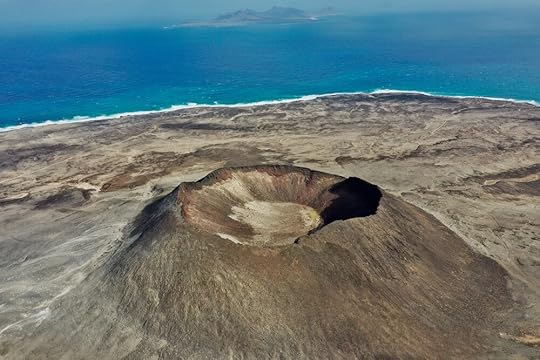
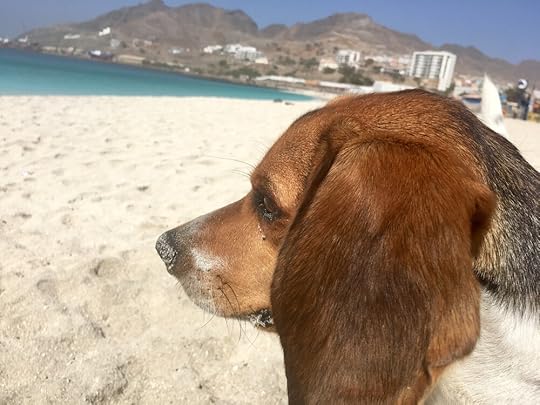
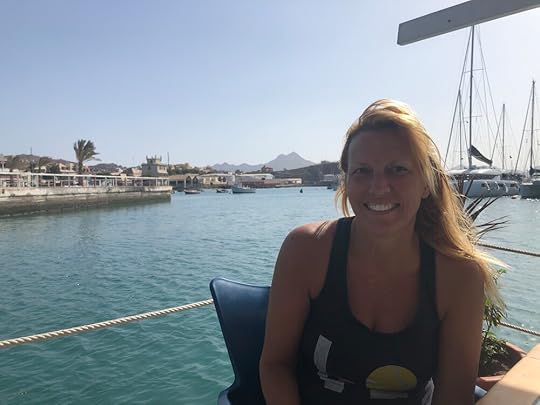
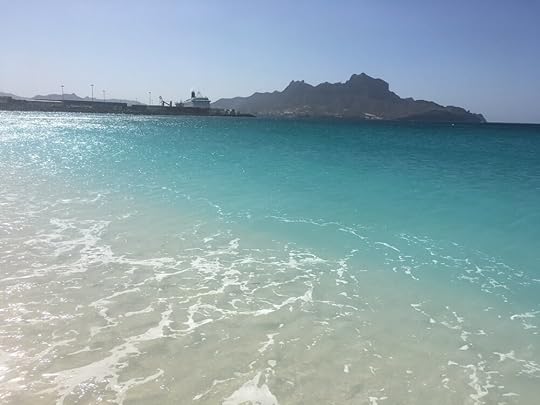
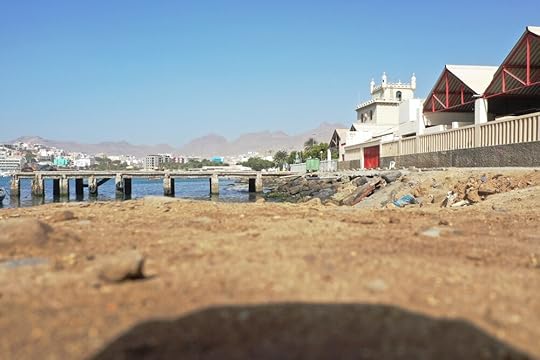
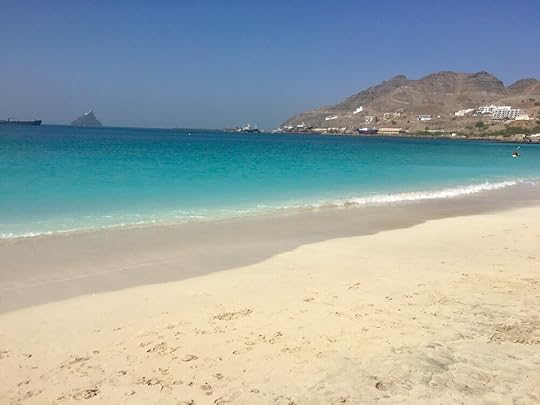
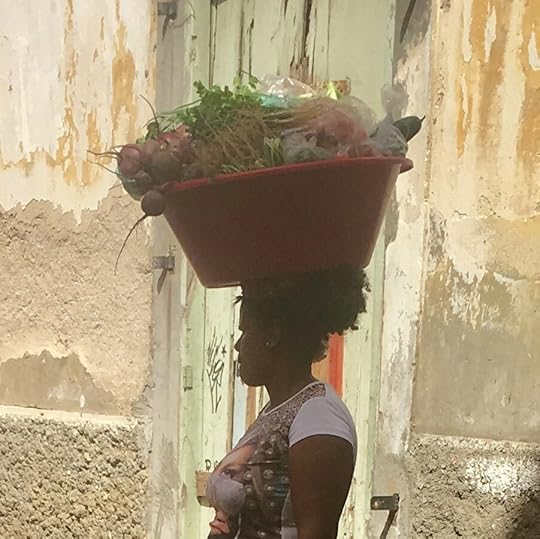
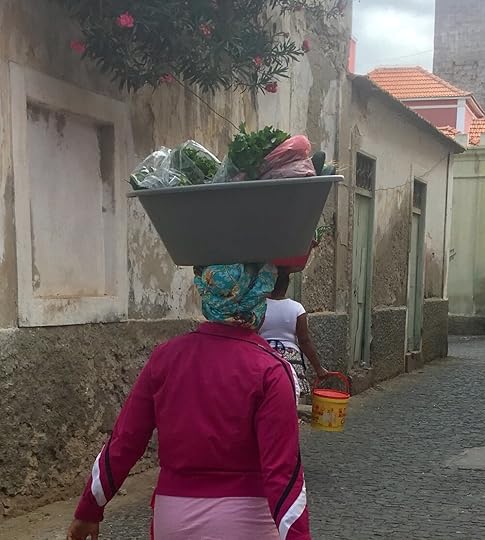
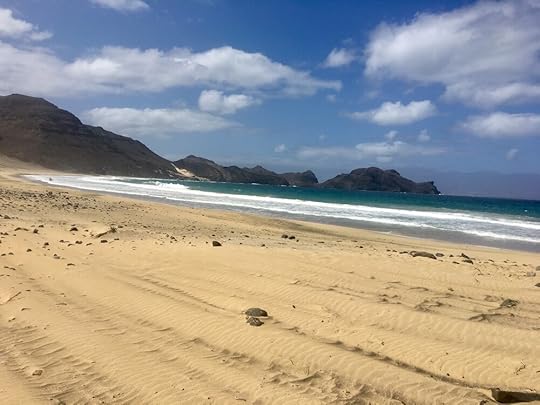
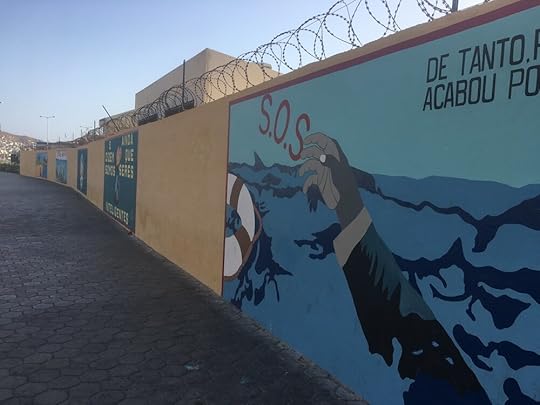

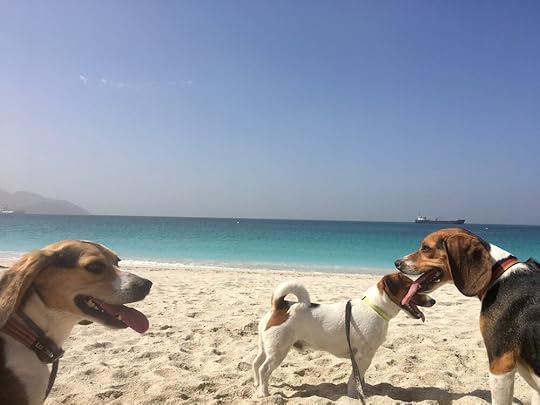
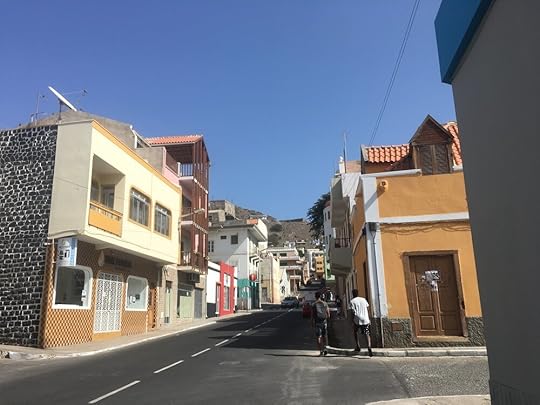
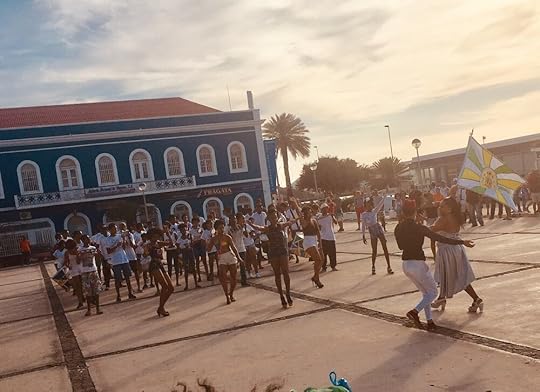
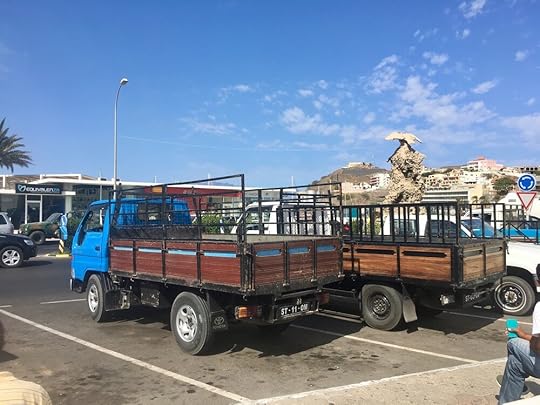
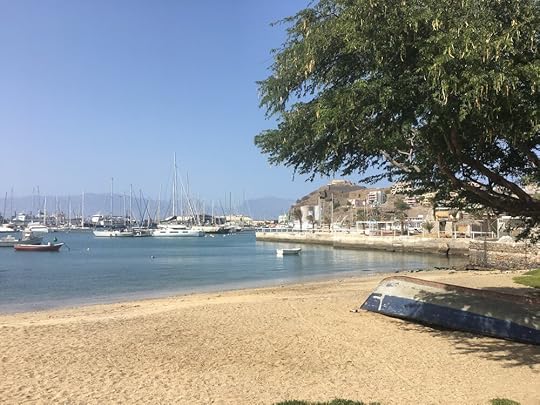
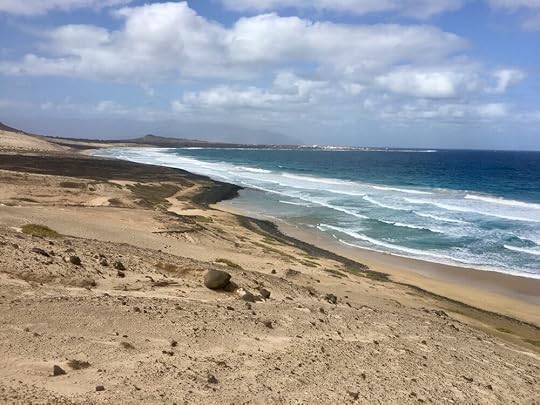
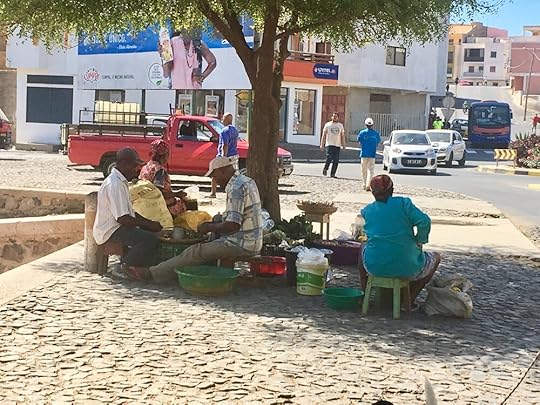

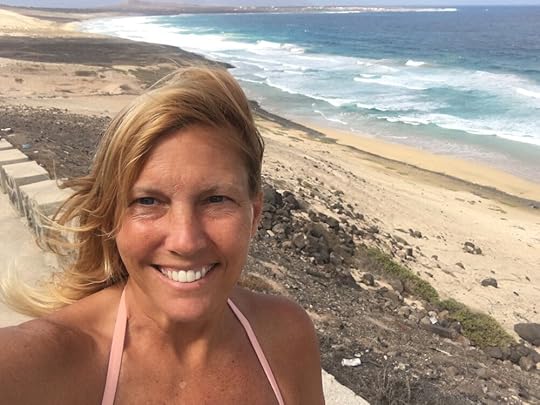


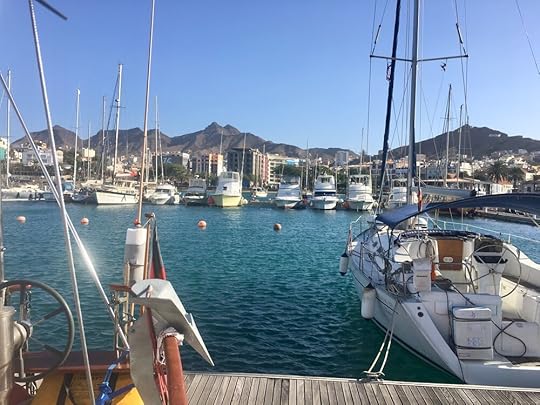
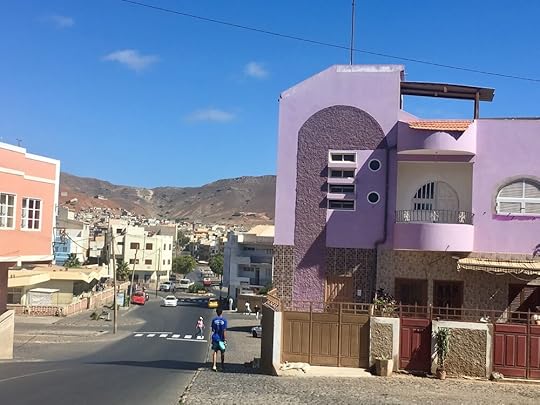
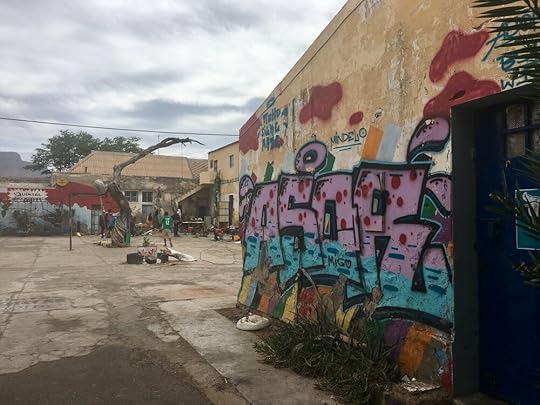
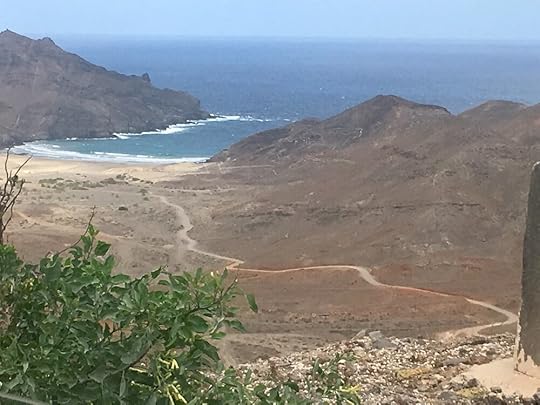

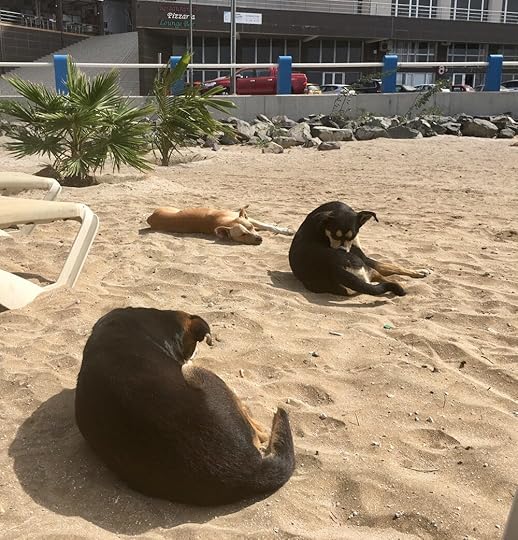
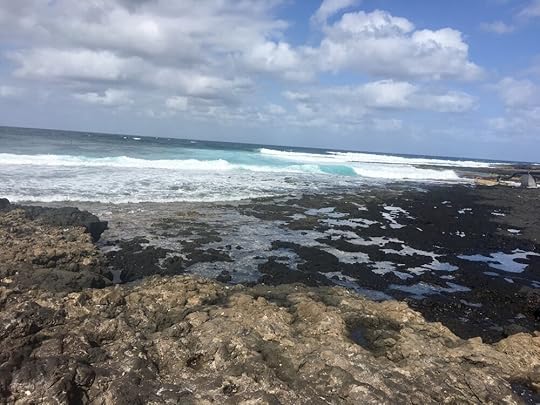
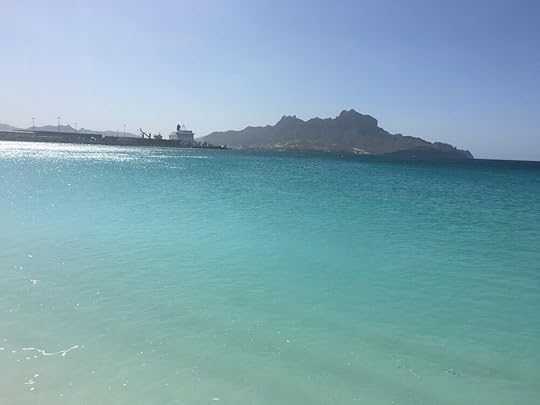
January 5 - 29, 2019By Michelle Segrest — Travel Adventures from #myofficetoday
Walk through the streets of Mindelo on the Cape Verde island of São Vicente to find a colorful culture bursting with rhythmic music, vibrant street art, energetic people, buildings painted in a rainbow of colors, dozens of stray dogs adopted by the community, and wild beaches with water as blue as Windex.
The women of Mindelo casually stroll through the city wearing bright colors and balancing heavy bins full of fruit and vegetables on their heads. They carry these bins as casually as if they were simply wearing hats. They find a street corner and peddle the fresh produce all day, until long after the sun drops behind the horizon of the plush brown mountaintops. For just about any amount of escudos (local currency) you offer, you can buy lettuce, potatoes, tomatoes, gigantic carrots, rhubarb, zucchini, huge papaya, squash, fresh coconut, bananas, and more.
There are open markets full of more vegetable peddlers. At the Mercado de Peixe you can choose from fresh fish pulled directly out of the Atlantic that morning. In the city center, near the harbor, there is a small replica of Lisbon’s famous Torre de Belèm and a bronze bust of Diogo Alfonso, a 15th century Portuguese explorer who discovered São Vicente and several of the other islands of Cape Verde.
Tucked away in the mid-Atlantic Ocean, the 10-island cluster that makes up Cape Verde is located more than 1,000 miles from the northwestern coast of Africa. Cape Verde’s landscape includes inactive volcanoes, miles of dry wasteland, and unbelievably beautiful beaches. The sea water reflects a mixture of every shade of blue and green you’ve ever seen.
Cape Verde (or Cabo Verde) is known for its Creole Portuguese-African culture and traditional lifting and rhythmic morna music. It also has close to perfect weather, rarely shifting up or down from 25-degrees Celsius (77F) at any time of the year, and it hardly ever rains.
The islands were uninhabited until Portuguese and Genoese sailors stumbled upon them in 1456. Many describe the archipelago as the “unspoiled alternative to the Caribbean.” Cape Verde stretches across 1,500 square miles of the Atlantic and contains 10 islands. Barlavento, the winward islands, include Santo Antão, São Vicente, Santa Luzia, São Nicolau, Sal, and Boa Vista. Sotavento, the leeward islands, include Maio, Santiago, Fogo, and Brava.
We spent three weeks in São Vicente, which has a population of just more than 80,000, with most of those people living in Mindelo. Monte Verde is its highest peak at 750 meters, and it dominates the landscape. Even though the name implies that it’s green, this mountain is brick red, chocolate brown, and every shade of red and brown in between with a little bit of green sprinkled on top.
Mindelo has everything from unfinished brown stone buildings in slum-like, dilapidated condition to buildings painted in bright purple, blue, yellow, orange, green, and red.
Handshakes are nowhere to be found. Instead, the friendly Cape Verdeans greet each other with a fist-to-fist pump with your neighbor followed by an in-sync fist pump to your own chest. The people of Cape Verde always seem to be outside and are always playing happy, lively music.
The streets of the city center are polluted with beggars, mostly men and children, who will walk up to any tourist (most of whom are sailors spending time at Marina Mindelo) and ask for a handout. They are not threatening at all, but the practice is a bit annoying. We actually wonder if it’s more of a habit than a necessity. Although the beggars are ever-present, the employed Cape Verdeans are hard-working, kind, and friendly. We have come in contact with many of them in the marina, the markets, and in the boat repair workshop.
The dozens of stray dogs are just part of the fabric of the island of São Vicente. They are friendly for the most part, well fed, and seem to have been adopted by the community although they obviously have no permanent home. Because the weather is so nice—not too hot and not too cold with only very rare drops of rain—they seem content living in the streets and eating random food trash dropped by the locals and tourists or found around the markets.
The open-air buses seem to be the perfect fit for this mild, comfortable climate. These are simply pick-up trucks with wooden benches that pick up the locals and take them where they need to go.
The beaches on the island of São Vicente are completely wild!! It’s amazing. There are no tall buildings blocking the coastline view. No restaurants. No hotels. No condos. And hardly any people. No lifeguards or flag signals are there to warn you of heavy waves or dangerous wildlife. You swim at your own risk. This is just nature and beauty in its purest form!
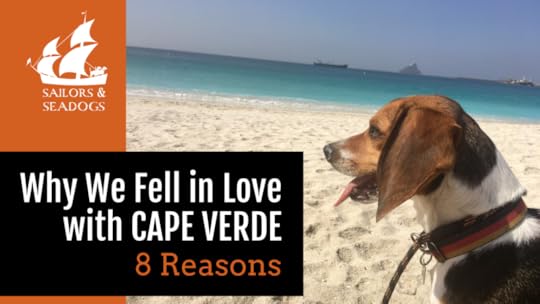
In the Mindelo town square, there is often music and activity. Locals dance in the streets and enjoy daily life. Most of the tourists are either sailors staying in the marina or anchored nearby, or people stopping for the day on cruise ships. A walk through the city center is always filled with color and life. There are often free concerts in the main square performed by well-known Cape Verdean musicians.
Because of its remote location, everything is expensive. It’s not difficult to understand why as we try to imagine just how difficult it would be to ship anything there. The internet is weak and sketchy, but we were able to find local data cards that helped us stay connected for the most part.
Our three weeks in Cape Verde were filled with mostly work for our clients and boat maintenance as we prepared our sailing vessel for an Atlantic Crossing. We even found a machine shop with the tagline, “If it’s made by humans, we can fix it.” The repair shop was full of very hard-working local men working in either flip flops or their bare feet. The equipment and machinery and tools looked “ancient.” It was amazing the quality of work they delivered working in such an environment. It’s a good thing. There are not many options in this part of the world.
This marina was full of battle-worn ships! Almost every sailor in the marina was busy making repairs after long voyages and in preparation of even longer voyages. Not many people sail to Cape Verde unless they are crossing the Atlantic or sailing to southern Africa. Some find their way to these remote islands when some sort of boat-related malfunction happens after leaving the Canaries. Others just use it as a break point when sailing from the Canaries to the Caribbean.
Every ship in the marina was working on repairs of some sort. The marina was active with the sounds of drills, sanders, hammers and conversations among sailors helping each other get fit to return to sea. Even with our broken motor, Seefalke was in better shape than most of the ships in the marina.
But we did find some time to explore this beautiful island and experience the friendly, colorful culture.
In Search of CachupaI had been wanting to try the traditional local dish, Cachupa. This slow cooked stew of corn (hominy), beans, cassava, sweet potato, fish or meat (sausage, beef, goat, or chicken) is often referred to as the country’s national dish. Each island has its own regional variation. Cachupa leftovers are often re-fried to make cachupa fria, cachupa guisada, or chachupa refogada (served for breakfast with a fried egg and a fried local sausage or fried mackerel).
We found a nice restaurant on the main street right outside the marina called Nautilus. I ordered the Cachupa which was a huge serving—very heavy and filling. It was warm and hearty and absolutely delicious!!!
A few days later we discovered a very cool local dive and returned many times during our stay in Cape Verde. Pastelaria is tucked away and hidden in a back alley, but lively music plays as the locals are always gathered there.
A traditional family-owned restaurant, the fisherman father and son bring in the fresh fish directly from the sea each morning. Mama is the cook, and the daughter is the hostess/waitress. They live in an apartment above the restaurant, which is open every day.
There is no menu. They serve what they catch each morning.
The entire restaurant is smaller than our sailboat, with four small tables. The service and the food are both fantastic! We tied up the beagles outside and paid a local man one euro to watch them so that there were no conflicts with any of the stray dogs. In this poor nation, you can’t imagine how happy this man was to earn 100 escudos (1 euro or $1.25 USD).
The local dish, Cachupa was available one day, but I decided to order the Garupa, a fish commonly found in the local waters.
This family is important to the extremely poor community. There is always vibrant music playing and locals hanging out there. Some of them come in and buy one cigarette at a time because they can’t afford a whole pack.
The portions of food are huge, and our leftovers were wrapped up and distributed to the hungry locals waiting outside. Our total bill one day for two home cooked meals and two drinks was around 600 escudos, which is less than $7 USD.

How to Sail with Dogs: 100 Tips for a Pet-Friendly Voyage
By Michelle Segrest
Dog-Friendly Beaches in Cape Verde
I decided to take a short walk to a nearby beach. My beagles, Cap’n Jack and Scout, had made a new friend in the marina with Tulling, an energetic Jack Russel terrier. His humans were not feeling well, so I offered to take all three dogs to the beach.
Tulling loves the water and wanted to jump right in. Cap’n Jack and Scout love to be ON the water, but don’t particularly love to be IN the water and aren’t quite sure about the waves at beaches. I was worried about unleashing three dogs who would likely run off in three different directions. Instead, I kept them all on their leashes. We walked the entire length of the small beach, Praia de Laginha, and then I sat for a while on the sugary white sand and admired the amazing blue and aqua colors of the water while the pups all spent their time digging. That’s right—they all three just dug holes in the sand for a few hours. We had a lot of fun.
It was cool to get a different view of Monte Cara, which we can see every day from the marina. Monte Cara is a mountain in the western part of the island of São Vicente. Its elevation is 490 meters. If you look carefully at the top of the mountain, you can see a human face looking at the sky. This is why it’s called Monte Cara, which means “face mountain.” It is a landmark in the city of Mindelo.
That evening, I wanted to try another local restaurant. We headed out in search of something new and tasty. We stopped at a nice Italian restaurant that had some variations of pizza and pasta but with a local flair. But they wouldn’t allow dogs, so we walked around a little and finally stopped at a local dive. Generally, we just love to find these “hole-in-the-wall” restaurants where all the locals eat. We are rarely disappointed. This time, we were not so lucky. I had fish that looked and tasted like a pork chop—and that’s all I have to say about that.
The next day I decided to venture back to the beach on my own.
It was a gorgeous but extremely windy day. I just lay there and soaked in the sun and got lost in the pages of a book for about three hours. Two stray dogs lay down next to me and napped in the hot sun. It’s been a while since I’ve been truly alone and with nothing to do. It felt so good to just relax.
As I was walking back to the marina, I caught a glimpse of some of the local graffiti, something I love to see in all the places we visit. São Vicente markets itself as the home to some of Cape Verde’s greatest musicians, writers, and thinkers. Mindelo is considered to be the cultural hub of the island.
I walked by the Universidade do Mindelo, which is one of only seven institutions of higher learning on the islands of Cape Verde. This university has only been around since 2003. It consists of one gray building on the corner of one square block.
Exploring More of the Island of São VicenteWe walked through the city some more and decided to venture far beyond the city center. This is where we found many local people out in the streets, listening to music, enjoying the amazing weather, and peddling more fresh vegetables. We constantly ran into the stray dogs of each neighborhood. It’s crazy how Cap’n Jack and Scout would bark and become agitated by some of them, and others didn’t even get a reaction from the beagles. One large brown dog just casually walked behind us for several blocks as if he were part of our pack.
There is only one airport on this small island. It is located about five kilometers from the Mindelo city center, just north of São Pedro. We passed it a few times while exploring some beaches, and we only saw one small airplane there at any given time. Its runway is 1,975 meters (6,480 ft) long and its width is 45 meters (148 ft). They generally have one flight per day to Lisbon, Portugal for connections to other parts of the world.
We rented a car and drove all around the island of São Vicente. We first drove to Praia Salamansa and enjoyed spectacular views of the surrounding mountains, crystally-dynamic blue waters, and pounding waves while several local kite surfers put on a show for us! As the hounds were enjoying their unleased time, we launched the drone and got some amazing footage from high above us.
As we were filming, a young local boy from the nearby rural village approached us, curious about the drone. He was probably about 12 years old and didn’t speak English, but we were able to find a way to communicate. It was obvious that the boy was fascinated seeing his home town from a completely different view. We are fairly certain he had never seen a drone before, and it’s possible he had never seen a video camera of any kind.
Soon, about 10 other kids came running toward us as we were landing the drone. The boy told them of the flying camera and they all became wide-eyed and looked to us to show them the magic machine. Unfortunately, the battery needed to be charged so we couldn’t launch it again for the new spectators. One of the kids had a small tray of seashells he had gathered from the beach. He had used the shells to make trinkets to sell. I bought a small turtle he created from the shells and a shell bracelet. Total price – 5 euros, which is probably more money than he had ever seen at one time before.

We set out to explore more of the island. We found a huge wasteland with a giant mountain sitting virtually in the middle of nowhere and decided to launch the drone again. We were amazed to discover that the mountain was actually a volcano that had been inactive for millions of years. Volcano Viana is not the most well-known volcano. It is not very notorious and does not spit lava, or smoke. It is small and off the beaten path. But it’s just breathtaking. WATCH THE VIDEO.
From there, we drove to Praia de Sarangaca, another totally wild an uninhabited beach with spectacular views and even more brilliant shades of blue!
We then decided to drive to the top of Monte Verde and see the island from its highest peak. We could see many of the surrounding islands and noticed the overall dryness of the island. In many places it’s desert-like with mostly sand, rocks, and mud. There is not much grass anywhere and not much natural vegetation. But the beaches that surround the entire island highlight the amazing azure waters of the Atlantic.
The next day we decided to go to the other side of the island to the beach at São Pedro. This beach once again had vibrant blue water. It also had gorgeous golden-blackish sand and was surrounded by another small village with buildings as colorful as a Crayola box. The wooden boats that lined the shore were also painted in a multitude of bright colors.
We were welcomed by about 10 stray dogs who seemed to be a built-in alarm system for the village. Cap’n Jack and Scout joined in the bark fest as we made our way to the water.
The water was a bit cold for me, so I played on the beach with the dogs.
Carnivals and Festivals in Cape VerdeThat evening, there was a free concert in the Mindelo city center square. One of Cape Verde’s pop stars (can’t remember his name) was performing a free concert. It was such a lively and energetic atmosphere as the locals and tourists enjoyed the free entertainment into the early hours of the next morning. Of course, we didn’t last that long.
While sitting at the marina’s floating bar on a lovely, mild evening a sweet couple from the Netherlands approached me and asked if they could pet Cap’n Jack and Scout. We started a conversation and I learned that Caroline and Fred have been sailing on Pegasus for a while and had been in Cape Verde for several months. They had visited eight of Cape Verde’s 10 islands and will not leave again until after the famous Cape Verde Carnival on Sao Vicente, which is a colorful spectacle of music, dance and street processions.
During the Mindelo carnival, also known as the Creole festival, the streets come alive with colorful dance troops and spectacular floats, each competing to win the coveted carnival prize for being the best. Unlike the similar carnival in Rio, this is very much a local affair, but in recent years it has become increasingly popular with people traveling to the island from all over the world who all come to join in the celebrations and watch this vibrant festival of life.
The celebrations start in January with colorful parades held every Sunday. We actually got to see one this week. The procession went through the streets and anyone who wanted to join in the dancing and celebration just jumped right in. The week leading up to Shrove Tuesday (in 2019 from the 2nd to the 6th of March) is crammed with parties and other events, eventually culminating in the main parade, which runs late into the night.
 Swimming with Loggerhead Turtles
Swimming with Loggerhead TurtlesWe decided we needed to have one more local experience before leaving Cape Verde. We took a break from our checklist, went back to our favorite local back alley restaurant with Alexa and Alain, our French friends/neighbors and then we all took a bus to São Pedro.
We had been to this beach before. It’s the one with all the colorful wooden fishing boats lining the shore and the dozens of stray community dogs welcoming us with their built-in barking alarm system.
We put on our diving gear and swam in the warm water in search of Tortuga—local loggerhead turtles that swim in the wild in this area. We found these beautiful playful creatures and swam and played with them for hours. It was a remarkable experience. They were so friendly and swam right up to us. WATCH THE VIDEO
It was the perfect way to end our three weeks in this vibrant place full of wildlife, spectacular scenery, and colorful people.
If you like this article, please PIN IT!


WATCH THE VIDEO ABOUT THE 8 REASONS TO LOVE CAPE VERDE
READ ABOUT THE SAILING JOURNEY FROM THE CANARY ISLANDS TO CAPE VERDE – Seabirds, Sunsets & The Southern Cross
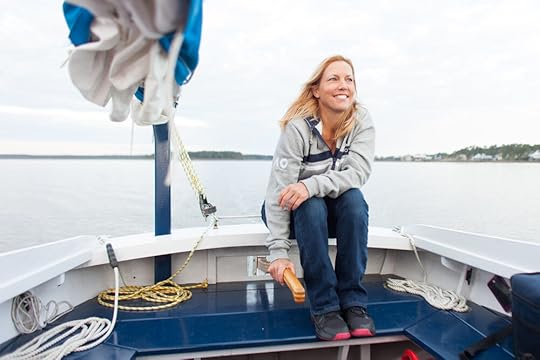
Sailing Adventure Blog
The Many Colors of Cape Verde































January 5 - 29, 2019By Michelle Segrest — Travel Adventures from #myofficetoday
Walk through the streets of Mindelo on the Cape Verde island of São Vicente to find a colorful culture bursting with rhythmic music, vibrant street art, energetic people, buildings painted in a rainbow of colors, dozens of stray dogs adopted by the community, and wild beaches with water as blue as Windex.
The women of Mindelo casually stroll through the city wearing bright colors and balancing heavy bins full of fruit and vegetables on their heads. They carry these bins as casually as if they were simply wearing hats. They find a street corner and peddle the fresh produce all day, until long after the sun drops behind the horizon of the plush brown mountaintops. For just about any amount of escudos (local currency) you offer, you can buy lettuce, potatoes, tomatoes, gigantic carrots, rhubarb, zucchini, huge papaya, squash, fresh coconut, bananas, and more.
There are open markets full of more vegetable peddlers. At the Mercado de Peixe you can choose from fresh fish pulled directly out of the Atlantic that morning. In the city center, near the harbor, there is a small replica of Lisbon’s famous Torre de Belèm and a bronze bust of Diogo Alfonso, a 15th century Portuguese explorer who discovered São Vicente and several of the other islands of Cape Verde.
Tucked away in the mid-Atlantic Ocean, the 10-island cluster that makes up Cape Verde is located more than 1,000 miles from the northwestern coast of Africa. Cape Verde’s landscape includes inactive volcanoes, miles of dry wasteland, and unbelievably beautiful beaches. The sea water reflects a mixture of every shade of blue and green you’ve ever seen.
Cape Verde (or Cabo Verde) is known for its Creole Portuguese-African culture and traditional lifting and rhythmic morna music. It also has close to perfect weather, rarely shifting up or down from 25-degrees Celsius (77F) at any time of the year, and it hardly ever rains.
The islands were uninhabited until Portuguese and Genoese sailors stumbled upon them in 1456. Many describe the archipelago as the “unspoiled alternative to the Caribbean.” Cape Verde stretches across 1,500 square miles of the Atlantic and contains 10 islands. Barlavento, the winward islands, include Santo Antão, São Vicente, Santa Luzia, São Nicolau, Sal, and Boa Vista. Sotavento, the leeward islands, include Maio, Santiago, Fogo, and Brava.
We spent three weeks in São Vicente, which has a population of just more than 80,000, with most of those people living in Mindelo. Monte Verde is its highest peak at 750 meters, and it dominates the landscape. Even though the name implies that it’s green, this mountain is brick red, chocolate brown, and every shade of red and brown in between with a little bit of green sprinkled on top.
Mindelo has everything from unfinished brown stone buildings in slum-like, dilapidated condition to buildings painted in bright purple, blue, yellow, orange, green, and red.
Handshakes are nowhere to be found. Instead, the friendly Cape Verdeans greet each other with a fist-to-fist pump with your neighbor followed by an in-sync fist pump to your own chest. The people of Cape Verde always seem to be outside and are always playing happy, lively music.
The streets of the city center are polluted with beggars, mostly men and children, who will walk up to any tourist (most of whom are sailors spending time at Marina Mindelo) and ask for a handout. They are not threatening at all, but the practice is a bit annoying. We actually wonder if it’s more of a habit than a necessity. Although the beggars are ever-present, the employed Cape Verdeans are hard-working, kind, and friendly. We have come in contact with many of them in the marina, the markets, and in the boat repair workshop.
The dozens of stray dogs are just part of the fabric of the island of São Vicente. They are friendly for the most part, well fed, and seem to have been adopted by the community although they obviously have no permanent home. Because the weather is so nice—not too hot and not too cold with only very rare drops of rain—they seem content living in the streets and eating random food trash dropped by the locals and tourists or found around the markets.
The open-air buses seem to be the perfect fit for this mild, comfortable climate. These are simply pick-up trucks with wooden benches that pick up the locals and take them where they need to go.
The beaches on the island of São Vicente are completely wild!! It’s amazing. There are no tall buildings blocking the coastline view. No restaurants. No hotels. No condos. And hardly any people. No lifeguards or flag signals are there to warn you of heavy waves or dangerous wildlife. You swim at your own risk. This is just nature and beauty in its purest form!

In the Mindelo town square, there is often music and activity. Locals dance in the streets and enjoy daily life. Most of the tourists are either sailors staying in the marina or anchored nearby, or people stopping for the day on cruise ships. A walk through the city center is always filled with color and life. There are often free concerts in the main square performed by well-known Cape Verdean musicians.
Because of its remote location, everything is expensive. It’s not difficult to understand why as we try to imagine just how difficult it would be to ship anything there. The internet is weak and sketchy, but we were able to find local data cards that helped us stay connected for the most part.
Our three weeks in Cape Verde were filled with mostly work for our clients and boat maintenance as we prepared our sailing vessel for an Atlantic Crossing. We even found a machine shop with the tagline, “If it’s made by humans, we can fix it.” The repair shop was full of very hard-working local men working in either flip flops or their bare feet. The equipment and machinery and tools looked “ancient.” It was amazing the quality of work they delivered working in such an environment. It’s a good thing. There are not many options in this part of the world.
This marina was full of battle-worn ships! Almost every sailor in the marina was busy making repairs after long voyages and in preparation of even longer voyages. Not many people sail to Cape Verde unless they are crossing the Atlantic or sailing to southern Africa. Some find their way to these remote islands when some sort of boat-related malfunction happens after leaving the Canaries. Others just use it as a break point when sailing from the Canaries to the Caribbean.
Every ship in the marina was working on repairs of some sort. The marina was active with the sounds of drills, sanders, hammers and conversations among sailors helping each other get fit to return to sea. Even with our broken motor, Seefalke was in better shape than most of the ships in the marina.
But we did find some time to explore this beautiful island and experience the friendly, colorful culture.
In Search of CachupaI had been wanting to try the traditional local dish, Cachupa. This slow cooked stew of corn (hominy), beans, cassava, sweet potato, fish or meat (sausage, beef, goat, or chicken) is often referred to as the country’s national dish. Each island has its own regional variation. Cachupa leftovers are often re-fried to make cachupa fria, cachupa guisada, or chachupa refogada (served for breakfast with a fried egg and a fried local sausage or fried mackerel).
We found a nice restaurant on the main street right outside the marina called Nautilus. I ordered the Cachupa which was a huge serving—very heavy and filling. It was warm and hearty and absolutely delicious!!!
A few days later we discovered a very cool local dive and returned many times during our stay in Cape Verde. Pastelaria is tucked away and hidden in a back alley, but lively music plays as the locals are always gathered there.
A traditional family-owned restaurant, the fisherman father and son bring in the fresh fish directly from the sea each morning. Mama is the cook, and the daughter is the hostess/waitress. They live in an apartment above the restaurant, which is open every day.
There is no menu. They serve what they catch each morning.
The entire restaurant is smaller than our sailboat, with four small tables. The service and the food are both fantastic! We tied up the beagles outside and paid a local man one euro to watch them so that there were no conflicts with any of the stray dogs. In this poor nation, you can’t imagine how happy this man was to earn 100 escudos (1 euro or $1.25 USD).
The local dish, Cachupa was available one day, but I decided to order the Garupa, a fish commonly found in the local waters.
This family is important to the extremely poor community. There is always vibrant music playing and locals hanging out there. Some of them come in and buy one cigarette at a time because they can’t afford a whole pack.
The portions of food are huge, and our leftovers were wrapped up and distributed to the hungry locals waiting outside. Our total bill one day for two home cooked meals and two drinks was around 600 escudos, which is less than $7 USD.

How to Sail with Dogs: 100 Tips for a Pet-Friendly Voyage
By Michelle Segrest
Dog-Friendly Beaches in Cape Verde
I decided to take a short walk to a nearby beach. My beagles, Cap’n Jack and Scout, had made a new friend in the marina with Tulling, an energetic Jack Russel terrier. His humans were not feeling well, so I offered to take all three dogs to the beach.
Tulling loves the water and wanted to jump right in. Cap’n Jack and Scout love to be ON the water, but don’t particularly love to be IN the water and aren’t quite sure about the waves at beaches. I was worried about unleashing three dogs who would likely run off in three different directions. Instead, I kept them all on their leashes. We walked the entire length of the small beach, Praia de Laginha, and then I sat for a while on the sugary white sand and admired the amazing blue and aqua colors of the water while the pups all spent their time digging. That’s right—they all three just dug holes in the sand for a few hours. We had a lot of fun.
It was cool to get a different view of Monte Cara, which we can see every day from the marina. Monte Cara is a mountain in the western part of the island of São Vicente. Its elevation is 490 meters. If you look carefully at the top of the mountain, you can see a human face looking at the sky. This is why it’s called Monte Cara, which means “face mountain.” It is a landmark in the city of Mindelo.
That evening, I wanted to try another local restaurant. We headed out in search of something new and tasty. We stopped at a nice Italian restaurant that had some variations of pizza and pasta but with a local flair. But they wouldn’t allow dogs, so we walked around a little and finally stopped at a local dive. Generally, we just love to find these “hole-in-the-wall” restaurants where all the locals eat. We are rarely disappointed. This time, we were not so lucky. I had fish that looked and tasted like a pork chop—and that’s all I have to say about that.
The next day I decided to venture back to the beach on my own.
It was a gorgeous but extremely windy day. I just lay there and soaked in the sun and got lost in the pages of a book for about three hours. Two stray dogs lay down next to me and napped in the hot sun. It’s been a while since I’ve been truly alone and with nothing to do. It felt so good to just relax.
As I was walking back to the marina, I caught a glimpse of some of the local graffiti, something I love to see in all the places we visit. São Vicente markets itself as the home to some of Cape Verde’s greatest musicians, writers, and thinkers. Mindelo is considered to be the cultural hub of the island.
I walked by the Universidade do Mindelo, which is one of only seven institutions of higher learning on the islands of Cape Verde. This university has only been around since 2003. It consists of one gray building on the corner of one square block.
Exploring More of the Island of São VicenteWe walked through the city some more and decided to venture far beyond the city center. This is where we found many local people out in the streets, listening to music, enjoying the amazing weather, and peddling more fresh vegetables. We constantly ran into the stray dogs of each neighborhood. It’s crazy how Cap’n Jack and Scout would bark and become agitated by some of them, and others didn’t even get a reaction from the beagles. One large brown dog just casually walked behind us for several blocks as if he were part of our pack.
There is only one airport on this small island. It is located about five kilometers from the Mindelo city center, just north of São Pedro. We passed it a few times while exploring some beaches, and we only saw one small airplane there at any given time. Its runway is 1,975 meters (6,480 ft) long and its width is 45 meters (148 ft). They generally have one flight per day to Lisbon, Portugal for connections to other parts of the world.
We rented a car and drove all around the island of São Vicente. We first drove to Praia Salamansa and enjoyed spectacular views of the surrounding mountains, crystally-dynamic blue waters, and pounding waves while several local kite surfers put on a show for us! As the hounds were enjoying their unleased time, we launched the drone and got some amazing footage from high above us.
As we were filming, a young local boy from the nearby rural village approached us, curious about the drone. He was probably about 12 years old and didn’t speak English, but we were able to find a way to communicate. It was obvious that the boy was fascinated seeing his home town from a completely different view. We are fairly certain he had never seen a drone before, and it’s possible he had never seen a video camera of any kind.
Soon, about 10 other kids came running toward us as we were landing the drone. The boy told them of the flying camera and they all became wide-eyed and looked to us to show them the magic machine. Unfortunately, the battery needed to be charged so we couldn’t launch it again for the new spectators. One of the kids had a small tray of seashells he had gathered from the beach. He had used the shells to make trinkets to sell. I bought a small turtle he created from the shells and a shell bracelet. Total price – 5 euros, which is probably more money than he had ever seen at one time before.

We set out to explore more of the island. We found a huge wasteland with a giant mountain sitting virtually in the middle of nowhere and decided to launch the drone again. We were amazed to discover that the mountain was actually a volcano that had been inactive for millions of years. Volcano Viana is not the most well-known volcano. It is not very notorious and does not spit lava, or smoke. It is small and off the beaten path. But it’s just breathtaking. WATCH THE VIDEO.
From there, we drove to Praia de Sarangaca, another totally wild an uninhabited beach with spectacular views and even more brilliant shades of blue!
We then decided to drive to the top of Monte Verde and see the island from its highest peak. We could see many of the surrounding islands and noticed the overall dryness of the island. In many places it’s desert-like with mostly sand, rocks, and mud. There is not much grass anywhere and not much natural vegetation. But the beaches that surround the entire island highlight the amazing azure waters of the Atlantic.
The next day we decided to go to the other side of the island to the beach at São Pedro. This beach once again had vibrant blue water. It also had gorgeous golden-blackish sand and was surrounded by another small village with buildings as colorful as a Crayola box. The wooden boats that lined the shore were also painted in a multitude of bright colors.
We were welcomed by about 10 stray dogs who seemed to be a built-in alarm system for the village. Cap’n Jack and Scout joined in the bark fest as we made our way to the water.
The water was a bit cold for me, so I played on the beach with the dogs.
Carnivals and Festivals in Cape VerdeThat evening, there was a free concert in the Mindelo city center square. One of Cape Verde’s pop stars (can’t remember his name) was performing a free concert. It was such a lively and energetic atmosphere as the locals and tourists enjoyed the free entertainment into the early hours of the next morning. Of course, we didn’t last that long.
While sitting at the marina’s floating bar on a lovely, mild evening a sweet couple from the Netherlands approached me and asked if they could pet Cap’n Jack and Scout. We started a conversation and I learned that Caroline and Fred have been sailing on Pegasus for a while and had been in Cape Verde for several months. They had visited eight of Cape Verde’s 10 islands and will not leave again until after the famous Cape Verde Carnival on Sao Vicente, which is a colorful spectacle of music, dance and street processions.
During the Mindelo carnival, also known as the Creole festival, the streets come alive with colorful dance troops and spectacular floats, each competing to win the coveted carnival prize for being the best. Unlike the similar carnival in Rio, this is very much a local affair, but in recent years it has become increasingly popular with people traveling to the island from all over the world who all come to join in the celebrations and watch this vibrant festival of life.
The celebrations start in January with colorful parades held every Sunday. We actually got to see one this week. The procession went through the streets and anyone who wanted to join in the dancing and celebration just jumped right in. The week leading up to Shrove Tuesday (in 2019 from the 2nd to the 6th of March) is crammed with parties and other events, eventually culminating in the main parade, which runs late into the night.
 Swimming with Loggerhead Turtles
Swimming with Loggerhead TurtlesWe decided we needed to have one more local experience before leaving Cape Verde. We took a break from our checklist, went back to our favorite local back alley restaurant with Alexa and Alain, our French friends/neighbors and then we all took a bus to São Pedro.
We had been to this beach before. It’s the one with all the colorful wooden fishing boats lining the shore and the dozens of stray community dogs welcoming us with their built-in barking alarm system.
We put on our diving gear and swam in the warm water in search of Tortuga—local loggerhead turtles that swim in the wild in this area. We found these beautiful playful creatures and swam and played with them for hours. It was a remarkable experience. They were so friendly and swam right up to us. WATCH THE VIDEO
It was the perfect way to end our three weeks in this vibrant place full of wildlife, spectacular scenery, and colorful people.
WATCH THE VIDEO ABOUT THE 8 REASONS TO LOVE CAPE VERDE
READ ABOUT THE SAILING JOURNEY FROM THE CANARY ISLANDS TO CAPE VERDE – Seabirds, Sunsets & The Southern Cross

Sailing Adventure Blog
February 22, 2020
Walking the Armadillos — Adventures in Morocco, Africa
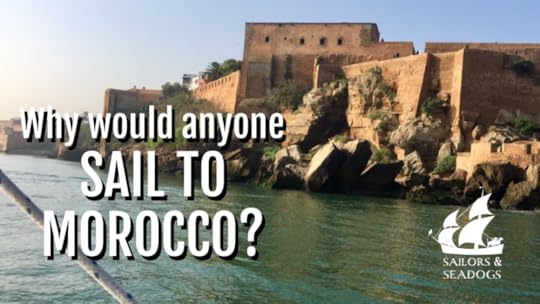
One of my favorite things to do while spending time in a sailing port is to talk with other sailors. We meet experienced sailors and newbies, full-timers and weekenders.
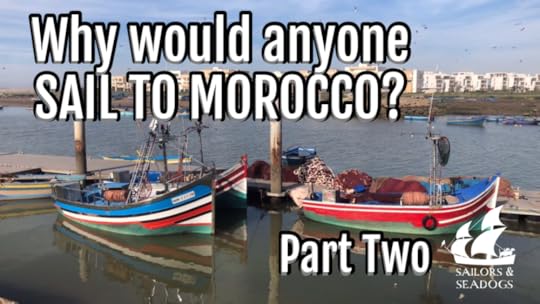
The sailing community is so cool! We all share weather reports and routes and tips about boat maintenance and living onboard. And of course, we all love to swap sailing stories.
Everywhere we’ve been so far, we have met sailors who are headed down to the Canary Islands, just like us. They seemed so surprised when we tell them we were excited about making a stop in Morocco.
I always ask them why they would miss a chance to explore the northwest African coastline—especially since it’s on the way. Some said they were afraid it was not safe. Others heard reports that it’s dirty and not many marina amenities. And others said they didn’t know if they would fit into the culture.
Whether their concerns were right or wrong, it was a no-brainer for me—I wanted to see for myself.
WHERE ARE ALL THE DOGS? Rabat, MoroccoThursday, 15 November 2018I was so happy to finally be in Africa! After a 75-hour passage from Lisbon, Portugal we had arrived in Rabat, Morocco early on Thursday morning. By the time we got through customs and moored Seefalke safely into her slip in Bouregreg Marina we immediately leashed Cap’n Jack and Scout and begin to explore Rabat, which is the capital city of Morocco.
I have visited Islamic countries before, but mostly in the Middle East. I knew that women are treated differently in this culture. I know how to dress to be respectful. Even though it is hot, it’s important for women to always stay covered. It’s not necessary for tourists to wear a burka, and in fact, most women in Morocco do not wear the traditional Muslim dress with head and face covering as they do in other places I’ve visited—Abu Dhabi, for example. Some women wear the long dresses and cover their heads. Others wear fashionable but modest clothes and maybe just cover their heads with a scarf. To be respectful, I always kept my arms and legs covered when venturing away from the marina.
After a short walk, the pups and I settled in while the captain went into the city alone to find an ATM and get some local currency (dirham). He also wanted to scope out a restaurant for the evening. Food in Rabat is inexpensive, and we didn’t feel like cooking after our exhausting passage. We also wanted to explore the city a little more.
We considered the choice of a fancy dinner or eating like the locals. My answer is always the same—eat like the locals!
As we began walking through the downtown streets, I noticed there were no women at any of the outdoor cafes. Only men were sitting there. I also noticed how people were staring curiously at me and the pups. The locals seemed fascinated with my blonde hair. I didn’t see one other blonde-haired woman that day or during our entire stay in Morocco.
The locals were also staring at the two Beagles on leashes walking through the city with us. Many people were frightened by them. It’s difficult to imagine how anyone could be afraid of Cap’n Jack and Scout. But in Morocco, there are not many dogs kept as pets. We saw some wild dogs roaming the streets, and we saw dozens of stray cats. But we didn’t see one single dog walking on a leash with a human.
Since we set sail from Stralsund, Germany on August 19, we have visited many ports. They were all dog friendly. We could take the Seadogs into restaurants and into shops with no problem. We were accustomed to seeing dogs being walked by their humans everywhere. In fact, in places like Spain and Portugal, it was rare to see someone walking the streets without a dog.
We learned that Moroccans consider dogs to be wild animals—not domestic pets. I suppose it was strange for them to see us taking a couple of wild animals for a walk.
We can understand when we put things into perspective. Compare it to how Alabamians feel about armadillos. We see them everywhere, all the time. We consider them wild animals and probably would not keep one as a pet. It would most definitely be odd to see someone walking through the streets of Gulf Shores with an armadillo on a leash.
This must be how the Moroccans feel seeing us walking our Beagles. After posting a video about our adventures in Morocco, we received an insightful explanation about the Moroccan attitude toward dogs from a viewer.
He explained…
“To answer your question concerning the whys behind Moroccans not having dogs as pets . . . Not all Moroccans can't or won't have dogs as pets but most prefer not to, the reason being that our religion (Islam) says that dogs have very-difficult-to-wash saliva that don't go away with your typical one soap-filled sponge scrub. In fact, our prophet Mohamed says that if a dog licks a plate it should be washed 6 times with water and the seventh should be done with soil.”
I really appreciated this polite and insightful explanation.
Meanwhile, I was beginning to understand why people think Morocco is dirty. There was trash lining the streets, and it was difficult to find a trash can. Orange peels, cigarette butts, paper food wrappers, and rotting banana peels were simply part of the landscape. I saw at least three men peeing on the side of the street. We even saw one man pooing in full squat right on the street.
Cap’n Jack and Scout didn’t seem to mind wading through the trash covered streets. They we’re loving all the stinky smells. For them, the stinker the better.
Somehow, we stumbled upon a special place. We found a very cool Moroccan restaurant that allowed women AND dogs - ô Saveurs de la Mèdina. We went inside and were treated to an exceptional meal and a beautiful, colorful Moroccan atmosphere. I ordered beef with grilled plums and apricots while the captain had lemon chicken with grilled green olives. It was so delicious! We soon discovered that the restaurant was owned by a Frenchman, not a Moroccan, which is probably why they were ok with us bringing in the dogs.
VIEW FROM THE CROW’S NEST — Friday, 16 November 2018We were expecting a visit from our friend, Aziz, who lives in Casablanca. But he would not arrive until later that afternoon, so we spent the morning working and then spent the afternoon making boat repairs.
One of our many tasks was to re-rig the halyard for the mizzen stay sail. It had detached during our last passage. In order to accomplish this, one of us needed to go to the top of the mast—the crow’s nest.
On a ketch, there are two masts. We needed to go to the top of the smaller one—the one on the stern—which is about 10 meters high.
I eagerly volunteered.
I was strapped into the bosun chair, which is kind of like a sling that you can sit in. It was carefully rigged with the mast’s built-in pulley mechanism so that I could be lifted to the top using a winch.
I felt safe. But just in case, I wrapped my legs around the mast and was squeezing as hard as I could with my thighs. Each time I heard the crank of the winch, I shimmied up the pole as the mechanism lifted me skyward.
I made it to the top and accomplished my task of rigging the halyard. While up there I snapped a few pictures. I tried to take a video, but I only captured images from the inside of my bra where I had stuffed my phone to keep it secure. The video was off when I thought it was on and on when I thought it was off.
Aziz showed up later that afternoon and we had a lovely time visiting with him. He offered to show us around Casablanca the next day. We quickly accepted. The best way to explore a new city is with a local!!
Because the restaurant from the night before allowed us to bring in Cap’n Jack and Scout, we returned there and enjoyed another fantastic Moroccan dinner. This time we had couscous with fresh grilled vegetables. It’s a tradition for Moroccans to eat couscous on Fridays.



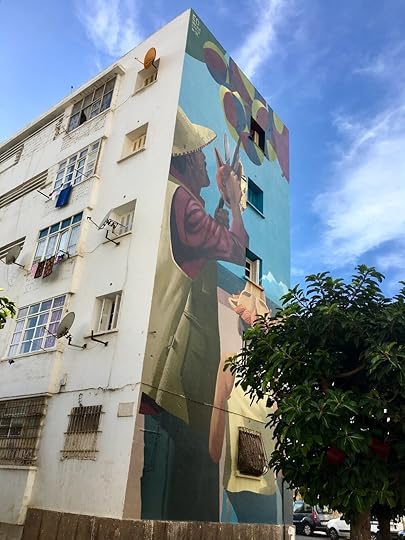

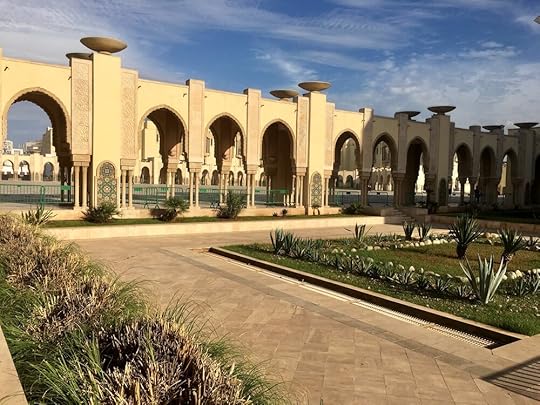


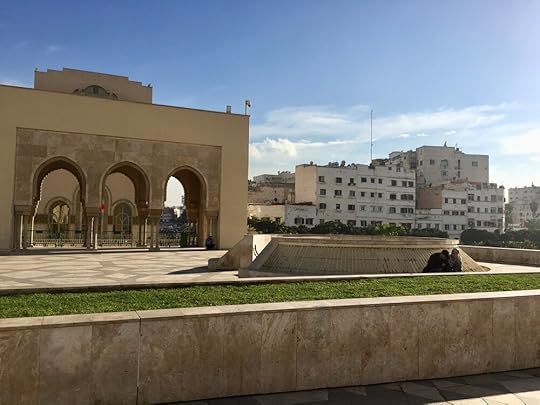

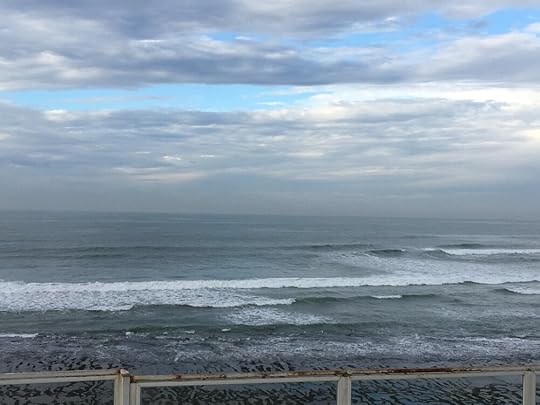


HERE’S LOOKIN’ AT YOU, KIDCasablanca, MoroccoSaturday, 17 November 2018
I awakened early and was so excited to spend the day in Casablanca! This has been on my all-time bucket list since I was a little girl and fell in love with the movie.
We took the tram to the main train station. But when we approached the kiosk to purchase our tickets, we were abruptly greeted by an official who told us we couldn’t bring the dogs on the train unless they were in a bag. A bag? First, we had no idea what he was talking about and secondly, we had no idea where to get a bag that we could use to carry Cap’n Jack and Scout onto a train.
We tried to get on a bus, but again, no dogs allowed.
Then we saw a line of taxis outside the station. We guessed it would cost a fortune to take a taxi 60 kilometers into Casablanca. But at this point we were running out of options.
We talked to a few of them and learned from their broken English that their taxis are not allowed to leave the city. I was starting to panic. There is no way I could come this far and not see Casablanca!
One of the taxi drivers got on his cell and about 30 seconds later, a driver walked over and said he would take us to Casablanca for 700 dirham. This is about 70 Euros or around $80 USD. He also was ok with us bringing the dogs along.
We thought this was fair and agreed. Of course, he had the same kind of taxi as the others so we were not sure how he could take us but the others couldn’t. Soon, we found out.
When we got to the edge of the city, he pulled over to the shoulder of a very busy highway and made a call on his cell. I was in the back seat all squashed in between two beagles had no clue what was going on.
A few minutes later, another driver showed up in an unmarked car. He parked in front of us on the shoulder.
Our driver said, “Get into the other car.” As other cars on the busy street whizzed by us at warp speeds we didn’t really have time to question the situation. We jumped out of the taxi and the four of us willingly got into the unmarked car with the driver we had never met. He quickly sped away. We felt like we were in a Jason Bourne movie.
The driver was very sweet and drove us into the heart of downtown Casablanca. It took about 90 minutes to get there. We pulled out the money to pay him the 700 dirham. The driver said, “Give me 1,000.” We stood firm. “We agreed to 700.” I quickly got myself and the dogs out of the car the negotiation continued. Finally, we gave him the agreed upon amount with a small tip and waited for Aziz outside a nearby train station.
Aziz picked us up and took us to his favorite restaurant, but we had to leave the dogs in the car with the windows slightly cracked. This made me nervous. But we had no choice. No dogs allowed.
I was sticking out like a sore thumb—no blondes anywhere. There is no way for me to look anything but American. This is fine with me, and I didn’t mind the stares. I just smiled at the people and gave them all a friendly, “Hey y’all!”
Casablanca is densely populated. The streets are very busy with lots of people and lots of activity.
It’s very touristy in some small areas but Casablanca is mostly local. Again, we saw only men sitting in the cafes, and we continued to get stares from people who didn’t seem to understand why we would walk through town with two wild animals on leashes.
For me, part of the fun and adventure of traveling is experiencing the different cultures and environments. I find this so enriching. It’s important to find ways to venture outside your own bubble.
The high touristy spots in Morocco are Agadir and Tangier. In Casablanca, we were tourists among locals and quite the novelty for them. There were beggars everywhere, and this American blonde was a hot target. I must have said “No” a million times.
Our first stop was the Hassan II Mosque, which is breathtakingly beautiful! It’s spectacular! It is the largest mosque in Africa, and the fifth largest in the world. Its minaret is the world's tallest at 210 metres (689 ft). Completed in 1993, the minaret is 60 stories high topped by a laser, the light from which is directed toward Mecca. The mosque stands on a promontory looking out to the Atlantic Ocean. Worshippers can pray over the sea but there is no glass floor looking into the sea. The walls are of hand-crafted marble and the roof is retractable. A maximum of 105,000 worshippers can gather together for prayer: 25,000 inside the mosque hall and another 80,000 on the mosque's outside ground.
The mosque is lavish and opulent. Anyone who is Muslim is invited to pray there. They don’t have to pay anything or be a member of anything. Aziz told us that the Moroccans believe that anyone should have access to God. The doors are always open for anyone and for Muslims during the standard prayer times, which are signaled by a series of bells ringing from the mosque tower that can be heard throughout most of the city.
We met with Aziz’s brother, Zaid, and strolled along the shore for a while. This is the area where many tourists visit. We got more stares from locals, and everyone seemed afraid of Cap’n Jack and Scout. We kept them on a close leash and tried to soften the fears. Some of the children wanted to pet them. We let them pet Scout, who is always friendly and gentle with kids, and they seemed to delight in touching her velvety ears. The adults kept a safe distance.
As the sun began to set, Aziz took us to the one tourist spot I just had to see—Rick’s Cafe. This is the famous gin joint from the movie “Casablanca.” The restaurant is relatively expensive and with the dogs, we didn’t even try to make a reservation. But I still wanted to see it.
From the outside it looked just like what I remember from the movie, only it was in color and not black and white. There were four guards outside the restaurant. I asked them if I could just take a peek inside. Their response... a very matter-of-fact, “This is not a museum.”
Aziz could see I was disappointed. He went up to the guards, and in the unique Moroccan French/Arabic blended dialect, he asked the guards if I could just go inside for a minute. He told them how I came all the way from Alabama. He managed to convince them, but I had to leave my camera outside.
This is an upscale restaurant so it was decorated much fancier and swankier than what we see in the movie. Bright, vibrant colored pillows were beautifully placed on the comfortable sofas and chairs that were used as seating around wood-carved tables lit with the warm glow of antique oil lamps. The spicy, fruity scent of incense filled the air. The waiters, all men, were dressed in classic black tuxedos and wore white gloves. You could see the chefs preparing food over steaming stoves through the open kitchen.
There was an incredible black grand piano sitting right in the middle of the restaurant. No one was playing it, but in my mind I could hear “As Time Goes By.”
Play it again, Sam.

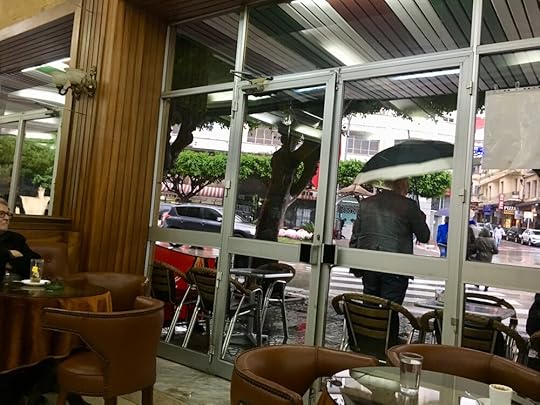
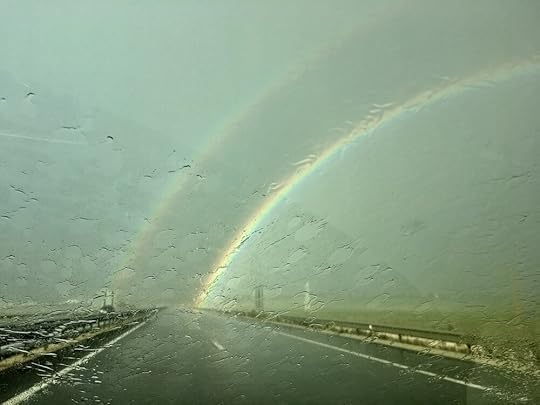



AMONG THE GHOSTS OF WRITERS AND SPIES Tangier, MoroccoSunday, 18 November 2018
There was one more place in Morocco that I really wanted to see—the Gran cafe de Paris in Tangier.
This is a very special place where famous writers like Tennessee Williams, Paul Bowles, and William Burroughs penned some of their most memorable masterpieces.
It’s also the hangout where secret agents and spies lurked to listen in on local conversations during Tangier’s colorful International Rule 1923 - 1952.
We had a rental car, so we decided to take a road trip about three hours north of Rabat, to Tangier.
It felt so strange to be in a car. We are now so accustomed to traveling on the boat.
I love road trips. And I especially love to take the road less traveled.
We were definitely on a rural highway—one that separated two civilized worlds. Our route was lined with goat and sheep farmers. The homes in the villages looked like they were made of misshapen cardboard boxes. The village streets were not paved or even graveled. The streets were made of mud.
On this road trip there were no burger joints at every exit. We finally found a gas station that also served pre-made sandwiches so we grabbed one and continued on.
As we got closer to Tangier, it began to pour! The rain was falling heavily as we made our way downtown to visit the famous cafe.
We found a parking spot and walked the pups. Then we put them back in the car so we could take a quick visit inside the cafe.
Even though the rain was pouring heavily, the streets were busy with the hustle and bustle of hundreds of people.
Six hours of driving in the pouring rain (round trip) just to sit in a cafe for an hour may sound preposterous for most people. But I am a writer. I wanted to just sit inside for a few minutes and inhale the writing genius in the air. After all, famous writers once found so much inspiration in this tiny cafe.
Most of the patrons were men, but they let me come inside. It was packed, and the whole place was covered in a fog of cigarette smoke.
The inside walls were paneled in dark carved wood. It reminded me of a gentleman’s cigar bar. Several locals, all men, were seated in a dark round parlor-style room intensely watching a soccer match on a big screen TV that truly did not seem to fit.
We were seated near a window in the front room. The waiters, all men, wore bright red suit jackets with white bow ties and black trousers. The small cafe was packed with people, mostly local men, and we had to share a table with other patrons. A few of the older gentlemen sitting across from us looked like they had been sitting there since the 1940s. Most of them were lost inside the pages of a book or a newspaper. They were all sitting shoulder to shoulder, but none of them were engaged in conversation with each other or even seemed to know each other.
I ordered a Moroccan mint tea, which I had some to love so much and also a danish. Then I just soaked in the atmosphere. I felt so inspired and couldn’t wait to write my next blog. By the way, we stayed about an hour and our total bill was €2.60 which is about $3.50 USD.
I was most interested in the writing genius that once frequented this simple cafe, but it’s also famous for being a hotspot for spies and secret agents. I find this so intriguing. There is a famous scene in the movie “Bourne Ultimatum” that takes place in this cafe.
We sat there about an hour then went back into the pouring rain to return to the car and the pups.
We made it back to Seefalke three hours later and crashed. Even with the heavy rain, it was worth the drive!



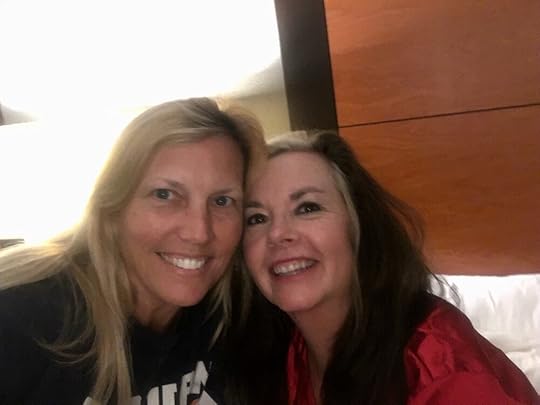
SWEET HOME ALABAMA - November 19-26, 2018
I needed to be at the airport by 06:00. I had been planning a trip to Alabama to surprise my parents for Thanksgiving. With a little more than an hour drive, this meant we needed to leave the marina by 04:30.
The rain was still falling heavily as we made our way to the rental car and then to the airport.
Again, there was a rigorous customs procedure. When I got to my gate there were only Americans waiting for my flight. I found this amusing. Where were all these blonde-headed, blue-blooded Americans all week?
My 20-year-old son, Bo, drove to Atlanta to pick me up from my flight. We had a lovely drive to Birmingham and got caught up on all the happenings in his life.
I have missed my kids so much. I had not seen them in four months.
We drove to Birmingham where I met with my best friend, Trisha, and her son, Michael. It was fantastic to see them. I had been getting so homesick and this was just the best thing ever to break away and spend time with family and friends.
I spent the night in Birmingham. I was having a hard time breathing, and I was badly congested. I think it was because my body was accustomed to the fresh salty sea air.
My 23-year-old daughter, Shelby, arrived on Tuesday and then the three of us headed to Lake Guntersville to surprise my parents and all my brothers and their families.
Shelby, Bo, and I had a plan. We would drive to my parents’ house and I would stay in the car. The kids went in and told their Nana and Pops (my parents) that they needed help bringing in some things from the car.
When they walked outside, I jumped out from behind the car! It was so awesome! They were so surprised! As the rest of the family trickled in during the next few days, I had so much fun catching up with everyone. My sister-in-law, Pam and my niece Allie came a day early just to spend some extra time with me.
The whole week was priceless. I even got to watch my first Auburn football game of the season, even though our rival Alabama beat us badly. I slept in a real bed and took real showers. This felt like a supreme luxury.
While in Alabama, I called my doctor and asked him if he would call in a prescription for Transderm Scop seasickness patches. Many sailors told me this would help me with my epic seasickness. Dr. Brock has been my doctor for more than 25 years. He delivered both of my children.
I had to go to two different places in Guntersville only to find 12 patches. Let’s hope they work!
On Sunday, Shelby drove me to Atlanta to catch my flight back to Morocco. I miss them already.
Back in Rabat — 26-30 November 2018I didn’t get much work done while in Alabama so this was my first priority. I worked hard on articles for my clients during the first two days back, and then began helping with all the boat maintenance that needs to be finished before we cross the Atlantic in a couple weeks.
There are a million things on the to-do list. We compare our boat maintenance list to a roll of toilet paper. No matter how many squares you tear off, it just keeps rolling and rolling and rolling. And when you get to end of that roll, you must replace it with a fresh roll. It’s never ending.
There are two things that are at the top of the list. First, we continue to have water coming into the bilge from the anchor windlass. This requires maintenance at least 2-3 times a week. The whole week I was in Alabama, it continued to pour in Morocco. This meant that a lot of water made its way into the bilge.
The captain had rigged several tools to reach into the tiny crevices in Seefalke’s belly. He even placed some baby diapers on the end of a long stick to sop up the water in the crevices and corners that he couldn’t reach with his arm and a sponge or with a water pump. Building creative rigs is just part of being a sailor.
Meanwhile, he was organizing our other major repair. We need to replace the zinc anodes on the bottom of the boat. We had a diver go underneath Seefalke in Lisbon. He told us they definitely need to be replaced, which means pulling the 11-ton Seefalke out of the water on a crane. The marina in Morocco has no crane so we made arrangements to take care of this once we get to the Canary Islands.
We were trapped in port that week because the swells coming in from the Atlantic at the entrance/exit of the marina were too dangerous. This gave us some time for all our chores. Then we readied the boat to set sail on Saturday morning.
We took a quick walk to a nearby beach. It was a beautiful setting, except for all the piles of trash everywhere. It was so strange—there were lovers walking arm in arm on this romantic beach, enjoying a remarkable sunset, and stepping over trash every few feet. Some couples were sitting on a blanket with trash all around them. It was bizarre to me, but for them I suppose it was the most natural thing in the world.
Why Would Anyone Sail to Morocco?
How to Sail with Dogs: 100 Tips for a Pet-Friendly Voyage
By Michelle Segrest
After two weeks in Morocco, we can confirm that it was worth it. Even though it is not dog-friendly, and the streets are dirty and the culture is different than what Americans are typically used to, it was a worthwhile stop on our way to the Canaries.
The great thing about traveling is exploring places that are unfamiliar to your everyday life. How boring would this world be if every place were the same and every culture the same?
I felt safe and welcomed in all the places we visited and leave here with a warm impression of Morocco. I would definitely recommend it to other sailors and to anyone who wants to have a unique and pleasant traveling experience.
You have to look beyond the trash-lined streets to see the beauty of Morocco—but the beauty is there.
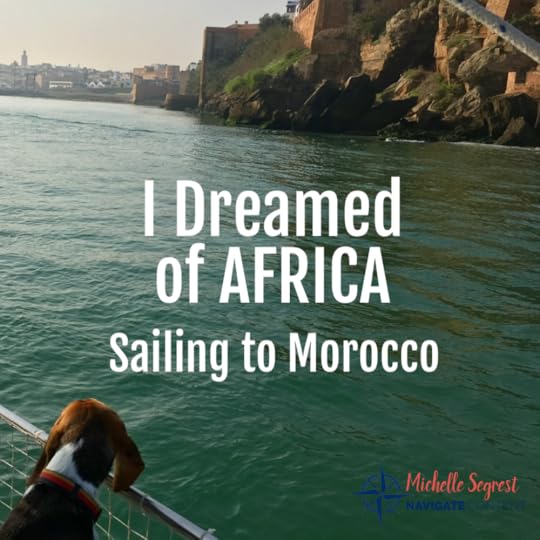
READ ABOUT WHEN I SAW AFRICA FOR THE FIRST TIME!
February 9, 2020
A Walking Tour of Lisbon, Portugal — An Amazing Sailing Destination
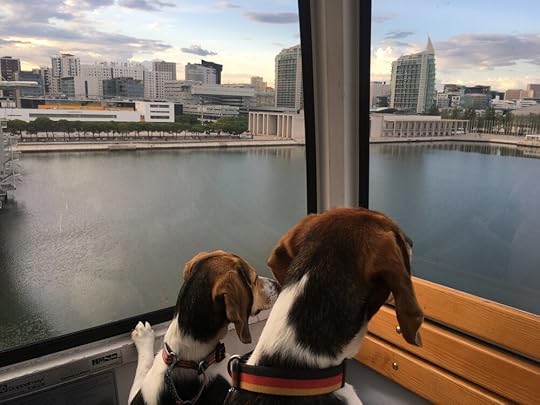
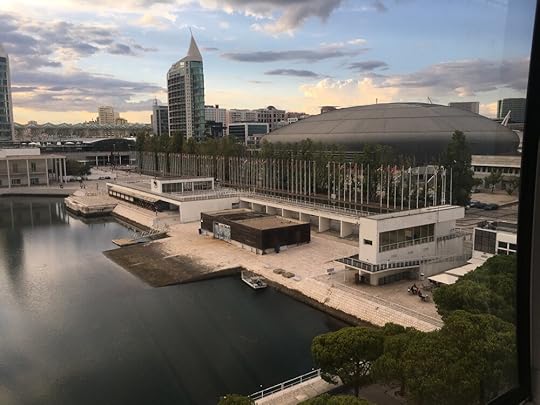
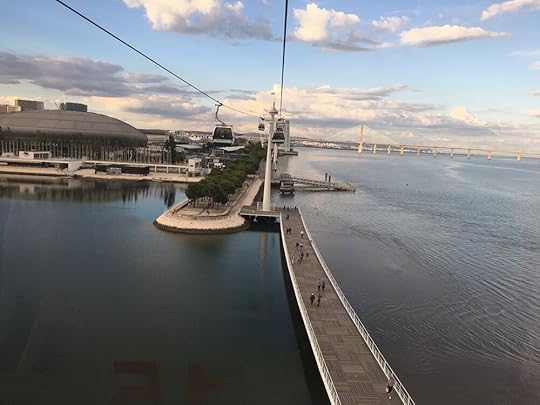
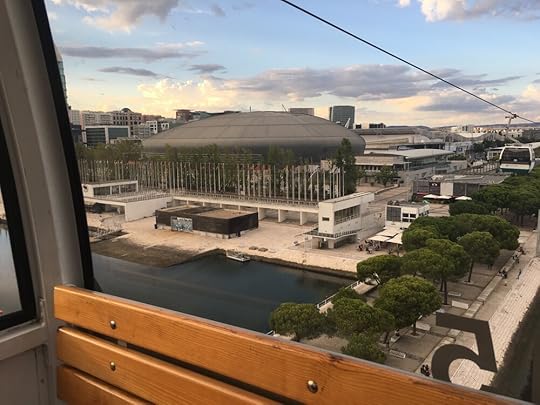
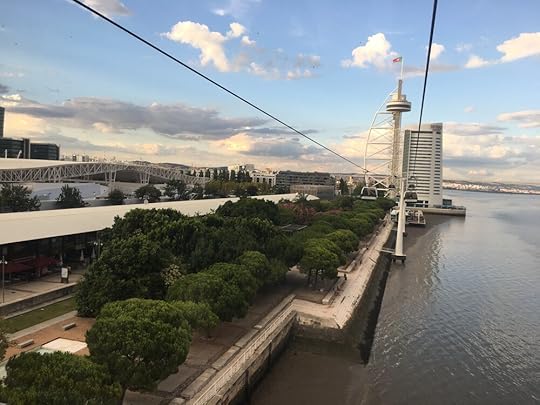
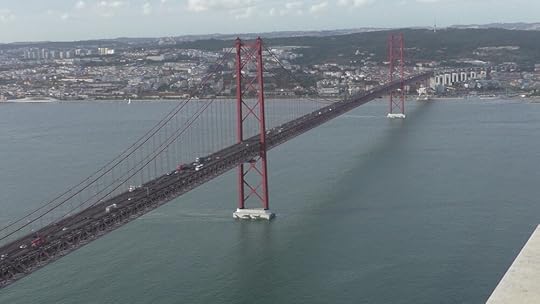
A walking tour of Lisbon, Portugal provides history, statues, beautiful buildings and experiences like exploring the village of Alfama and historical monuments like the Cristo Rei Christ (Christ the King) statue, the Belem Tower, and the Monument to the Discoveries. By Michelle Segrest — Travel Adventures from #myofficetoday
Seeing Portugal from the sea is spectacular. We had sailed four days from Vigo, Spain and cruised into the heart of Lisbon. We moored at the Parque das Nações (park of the nations) Marina, which is just about five minutes by car to the airport and provides access to all kinds of restaurants, shops, and easy-to-access transportation into downtown Lisbon.
We walked along the promenade to find some delicious Portuguese food and took a quick ride on the gondola (Telecabine Lisboa) which was built in 1998 for the World Expo. My traveling dogs—Cap’n Jack and Scout—loved this, especially Scout, who always just wants to see everything! It’s amazing how they have become such world travelers and are not afraid of any form of transportation!
A quick bus ride into the city provided all kinds of opportunities to explore.
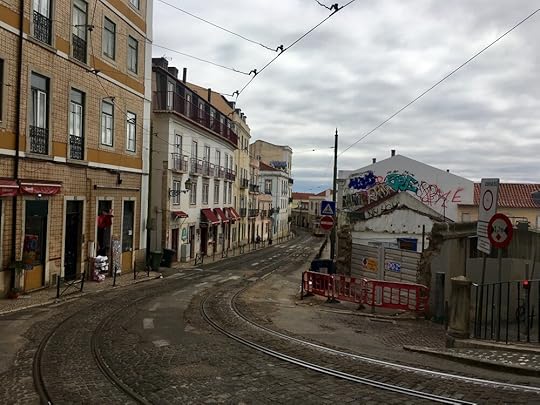
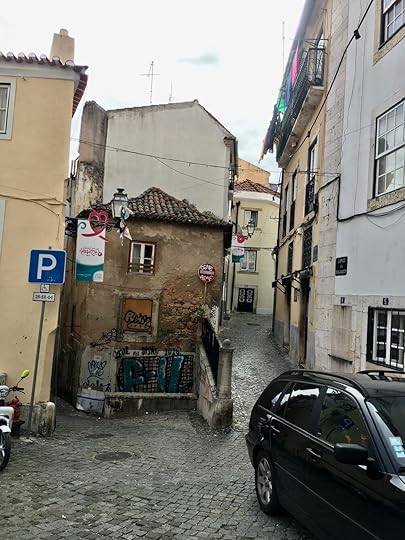
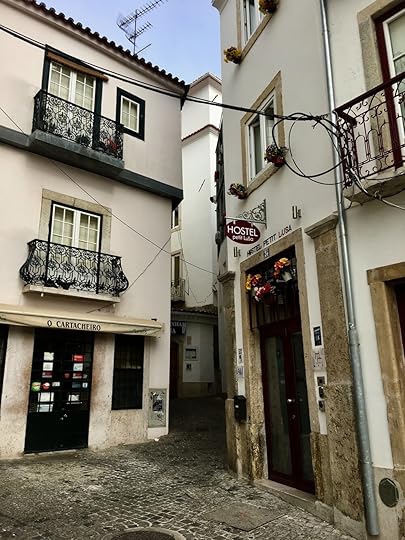
Our first stop—Alfama.
Alfama is the oldest district of Lisbon, spreading on the slope between the São Jorge Castle and the Tejo River. Its name comes from the Arabic Al-hamma, which means “hot fountains.” This little district is colorful and quaint and contains many historical attractions and tons of bars, cafes, and restaurants along its narrow streets and small squares.
During the times of Moorish domination, Alfama was the main city and later became inhabited by fishermen and the “poor”—locals consider it the “neighborhood of the poor” to this day. In recent years, the neighborhood has been invigorated with the renovation of old houses and new restaurants. One of its most frequent visitors is superstar Madonna, who is often seen in the local pubs and restaurants.
We enjoyed walking through the district, but it was a bit “touristy” for us. We climbed some of the very steep narrow streets and found a fantastic local café off the beaten path and outside of the heavy tourist zone. We went inside and enjoyed some delicious coffee and key lime pie with a pistachio crust. The proprietor convinced me to take the coffee black instead of my usual cream and sugar with a little coffee. I must admit, it was fantastic! When you have mostly had instant coffee at sea for many months, you can really appreciate really good coffee.

As we were heading back toward the bus station, all the city center streets were closed and the bus lines were closed. After asking around, we discovered why. There was a huge parade through the city with F-16 fighters flying overhead to mark the 100th anniversary of the Armistice of World War I. The parade included high figures of the state and armed representatives from Germany, USA, France, and the United Kingdom. It was a moving, special experience, and we were so lucky to have just stumbled upon it. I love it when that happens!
The next day we headed back into the city and explored some of the very cool historic monuments. There are tons of monuments in Lisbon, but there were three in particular that caught our attention.

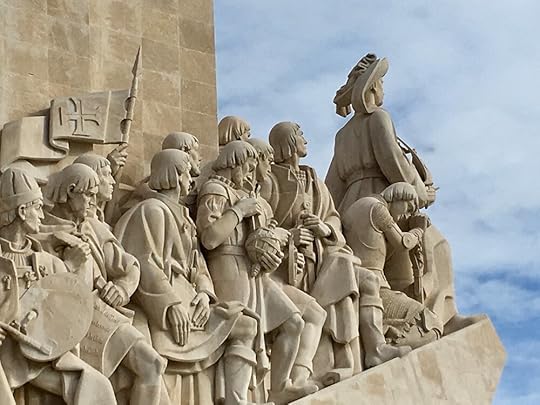
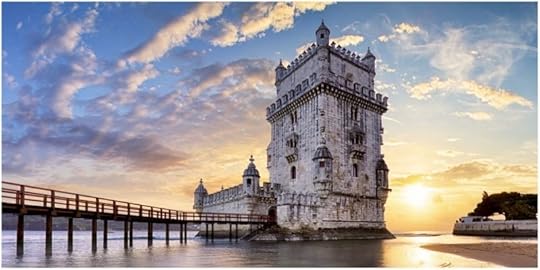

Cristo Rei Christ (Christ the King)
The Cristo Rei Christ (Christ the King) statue is one of Lisbon’s most iconic monuments. The statue of Christ stands high above the southern banks of the Tejo Estuary and depicts Christ with arms raised, blessing the city. Cristo Rei dates back to the 1950s. Its construction was in reverence for Portugal avoiding the horrors of WWII. It reminds me of the Christ the Redeemer statue in Rio de Janeiro.
The Belem TowerThe Belem Tower is a fortified tower built to be a part of the defensive system for the Tagus River estuary, providing crossfire with the Fortress of the São Sebastiāo de Caparice on the south bank of the river. The tower is surrounded by dramatic crashing waves on all sides.
The Monument to the DiscoveriesThe Monument to the Discoveries is especially cool and was easily my favorite. Shaped like a caravel prow, it was erected to honor the main characters of the Portuguese Discovery Age. Henry the Navigator, the Discoveries sponsor, is surrounded by kings and queens, explorers, navigators, artists, scientists, cartographers, and missionaries whose deeds granted them a place in Portugal’s history during the 15th and 16th centuries.
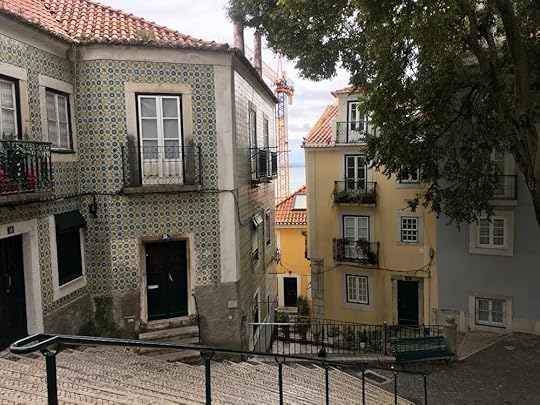
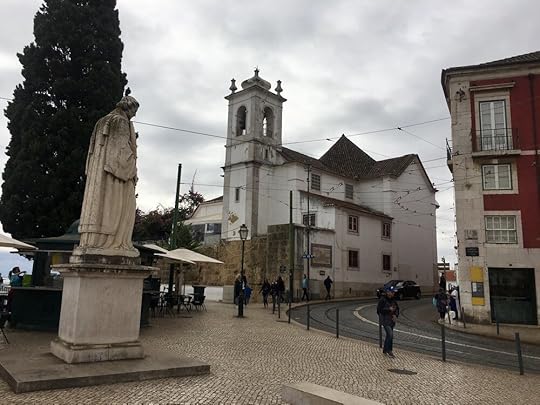
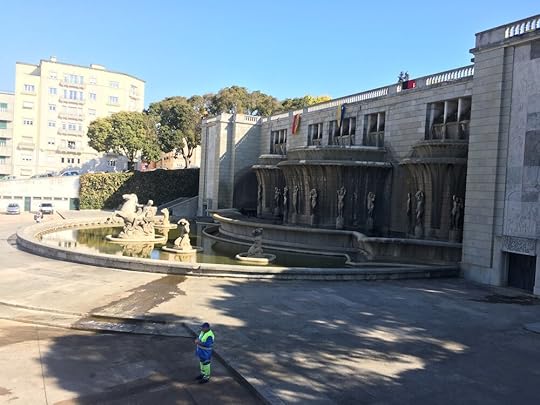
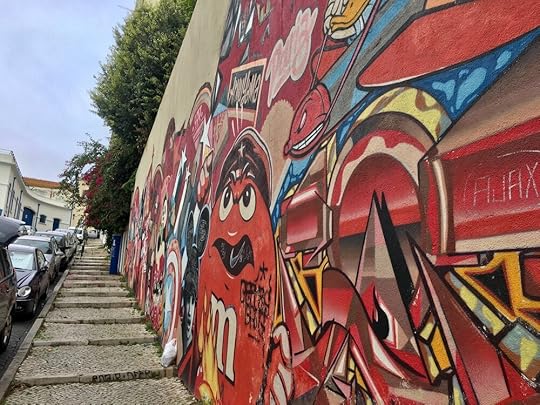
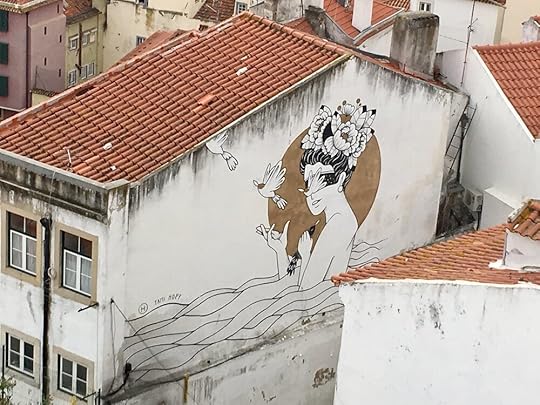
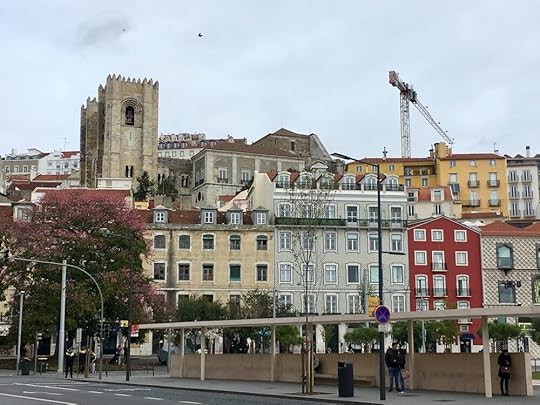
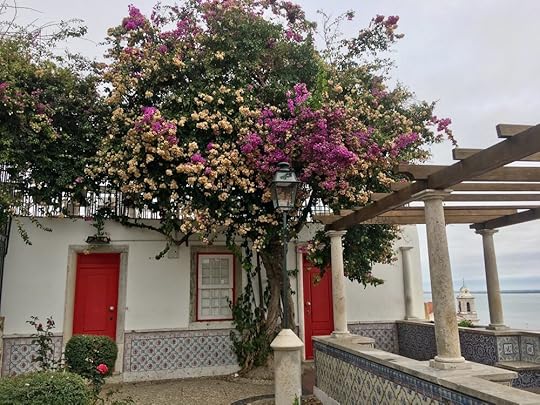
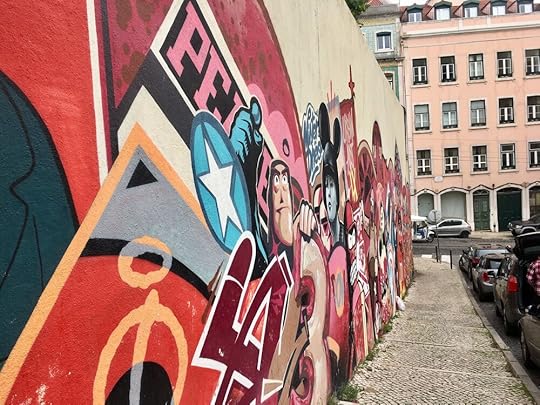
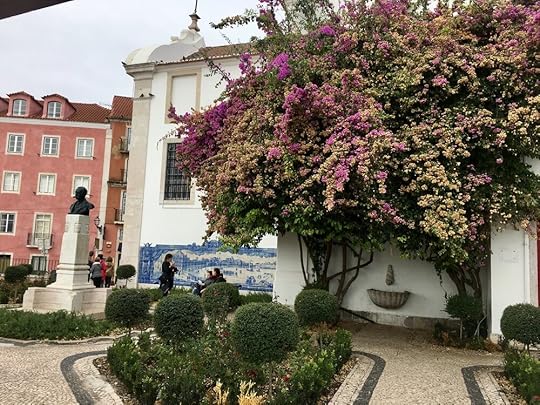
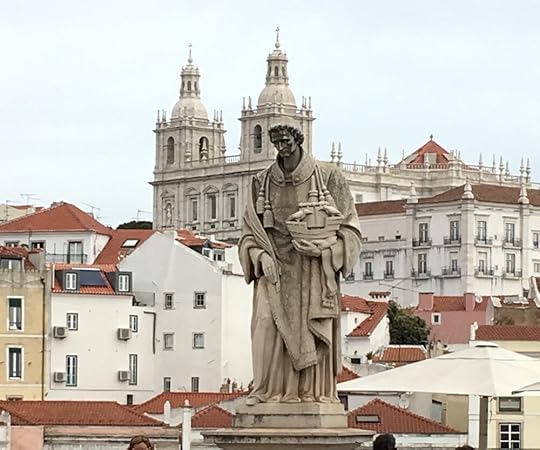
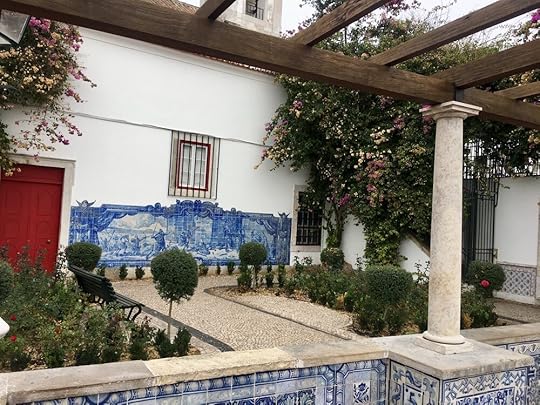
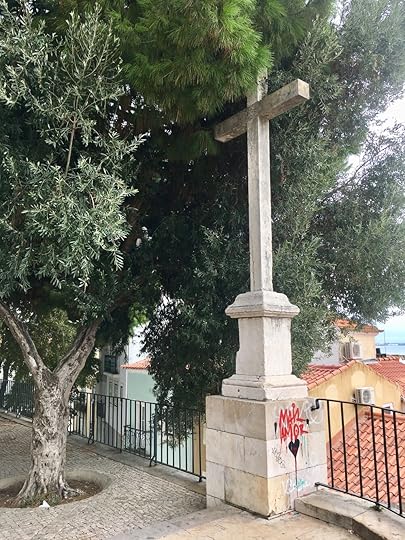
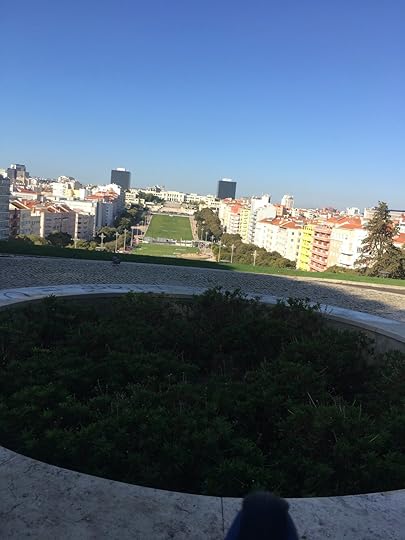
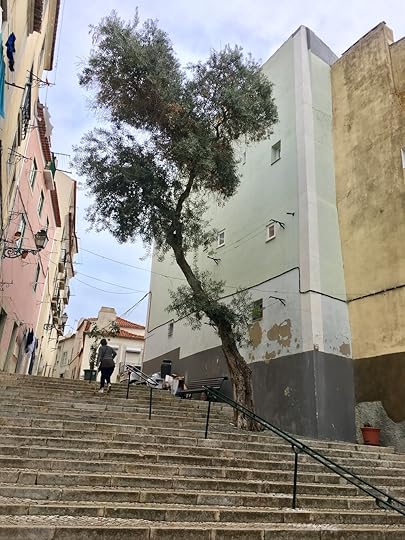
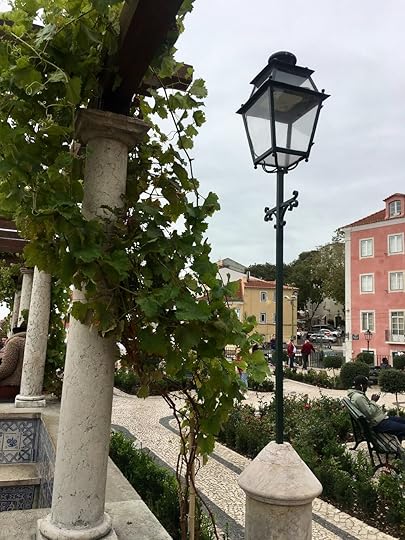
Where the Locals Go in Lisbon, Portugal
We took the ferry across the river into a part of the city where many locals live. This district feels like the ghetto of Lisbon. It’s older and much less touristy—and we just loved it. We stopped at a sweet outdoor family-owned restaurant. The proprietor took us straight to the “fish freezer” and recommended the fresh salmon, cod, and mackerel that came directly out of the sea just a few hours before.
Then he introduced us to his father who was stationed at an outdoor grill that we think was probably as old as he was—maybe older. This grill would never pass any American FDA inspection, I can assure you. The proprietor told us his father had been catching and cooking fish for the restaurant for 46 years. The cook spoke no English, but we could easily understand his insistence that we would love this.
We chose to ignore the rust on the broken, ancient grill and simply sat down and enjoyed one of the tastiest meals I can ever remember eating. It was spectacular! Cap’n Jack and Scout devoured their shares of the freshly grilled fish.
Lisbon is a gorgeous city with many free things to see and experience on a walking tour.
MORE TRAVEL ADVENTURES FROM #MYOFFICETODAYBest Private Beaches in SPAIN - Finding Adventure in Unexpected PlacesHow to Survive the Wimbledon Queue in the Rain15 Things I Would Rather Do Than Attend Carnival in BrazilLiving Life Sideways - How to Live Full-Time on a SailboatWhat is Geocaching? Free Adventures Off the Beaten PathPlash Island - Paradise on Alabama's Gulf CoastIf you like this article about Lisbon, please PIN IT!
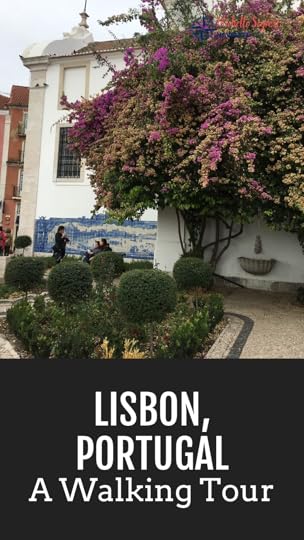
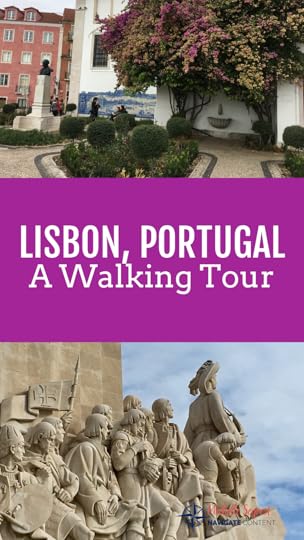
This page contains affiliate links. If you click on the product links and make a purchase, it allows me to make a small commission at no extra cost to you! Thank you for your support and I hope you find value in this content!


A Walking Tour of Lisbon, Portugal






November 4 - 11, 2018By Michelle Segrest — Travel Adventures from #myofficetoday
Seeing Portugal from the sea is spectacular. We had sailed four days from Vigo, Spain and cruised into the heart of Lisbon. We moored at the Parque das Nações (park of the nations) Marina, which is just about five minutes by car to the airport and provides access to all kinds of restaurants, shops, and easy-to-access transportation into downtown Lisbon.
We walked along the promenade to find some delicious Portuguese food and took a quick ride on the gondola (Telecabine Lisboa) which was built in 1998 for the World Expo. My traveling dogs—Cap’n Jack and Scout—loved this, especially Scout, who always just wants to see everything! It’s amazing how they have become such world travelers and are not afraid of any form of transportation!
A quick bus ride into the city provided all kinds of opportunities to explore.



Our first stop—Alfama.
Alfama is the oldest district of Lisbon, spreading on the slope between the São Jorge Castle and the Tejo River. Its name comes from the Arabic Al-hamma, which means “hot fountains.” This little district is colorful and quaint and contains many historical attractions and tons of bars, cafes, and restaurants along its narrow streets and small squares.
During the times of Moorish domination, Alfama was the main city and later became inhabited by fishermen and the “poor”—locals consider it the “neighborhood of the poor” to this day. In recent years, the neighborhood has been invigorated with the renovation of old houses and new restaurants. One of its most frequent visitors is superstar Madonna, who is often seen in the local pubs and restaurants.
We enjoyed walking through the district, but it was a bit “touristy” for us. We climbed some of the very steep narrow streets and found a fantastic local café off the beaten path and outside of the heavy tourist zone. We went inside and enjoyed some delicious coffee and key lime pie with a pistachio crust. The proprietor convinced me to take the coffee black instead of my usual cream and sugar with a little coffee. I must admit, it was fantastic! When you have mostly had instant coffee at sea for many months, you can really appreciate really good coffee.
As we were heading back toward the bus station, all the city center streets were closed and the bus lines were closed. After asking around, we discovered why. There was a huge parade through the city with F-16 fighters flying overhead to mark the 100th anniversary of the Armistice of World War I. The parade included high figures of the state and armed representatives from Germany, USA, France, and the United Kingdom. It was a moving, special experience, and we were so lucky to have just stumbled upon it. I love it when that happens!
The next day we headed back into the city and explored some of the very cool historic monuments. There are tons of monuments in Lisbon, but there were three in particular that caught our attention.




Cristo Rei Christ (Christ the King)
The Cristo Rei Christ (Christ the King) statue is one of Lisbon’s most iconic monuments. The statue of Christ stands high above the southern banks of the Tejo Estuary and depicts Christ with arms raised, blessing the city. Cristo Rei dates back to the 1950s. Its construction was in reverence for Portugal avoiding the horrors of WWII. It reminds me of the Christ the Redeemer statue in Rio de Janeiro.
The Belem TowerThe Belem Tower is a fortified tower built to be a part of the defensive system for the Tagus River estuary, providing crossfire with the Fortress of the São Sebastiāo de Caparice on the south bank of the river. The tower is surrounded by dramatic crashing waves on all sides.
The Monument to the DiscoveriesThe Monument to the Discoveries is especially cool and was easily my favorite. Shaped like a caravel prow, it was erected to honor the main characters of the Portuguese Discovery Age. Henry the Navigator, the Discoveries sponsor, is surrounded by kings and queens, explorers, navigators, artists, scientists, cartographers, and missionaries whose deeds granted them a place in Portugal’s history during the 15th and 16th centuries.
We took the ferry across the river into a part of the city where many locals live. This district feels like the ghetto of Lisbon. It’s older and much less touristy—and we just loved it. We stopped at a sweet outdoor family-owned restaurant. The proprietor took us straight to the “fish freezer” and recommended the fresh salmon, cod, and mackerel that came directly out of the sea just a few hours before.
Then he introduced us to his father who was stationed at an outdoor grill that we think was probably as old as he was—maybe older. This grill would never pass any American FDA inspection, I can assure you. The proprietor told us his father had been catching and cooking fish for the restaurant for 46 years. The cook spoke no English, but we could easily understand his insistence that we would love this.
We chose to ignore the rust on the broken, ancient grill and simply sat down and enjoyed one of the tastiest meals I can ever remember eating. It was spectacular! Cap’n Jack and Scout devoured their shares of the freshly grilled fish.















February 7, 2020
Exploring Vigo, Spain
Vigo sits on Spain’s northwest coast. The mouth of the nearby Vigo Estuary is sheltered by the Cíes Islands, which form part of the Atlantic islands National Park. The Cíes are known for their rich birdlife and the crescent-shaped Playa de Rodas, which has been considered one of the world’s most beautiful beaches. The city’s old quarter is home to the neoclassical Church of Santa María.
Click Here to Explore Vigo, SpainFebruary 2, 2020
How to Get Your Land Legs - Coming Home After a Year at Sea
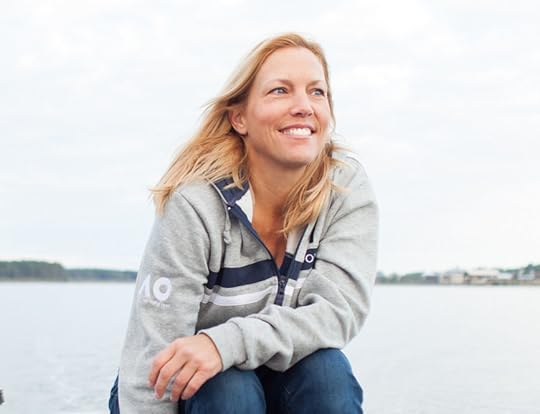
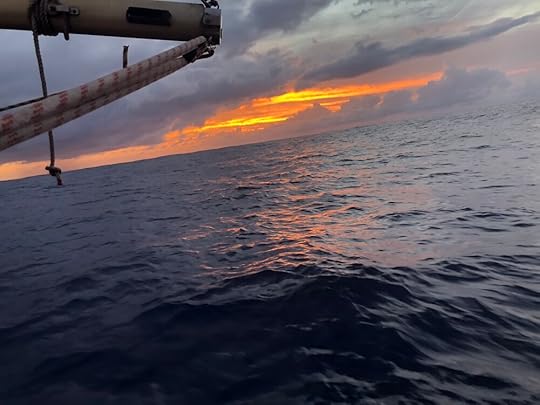
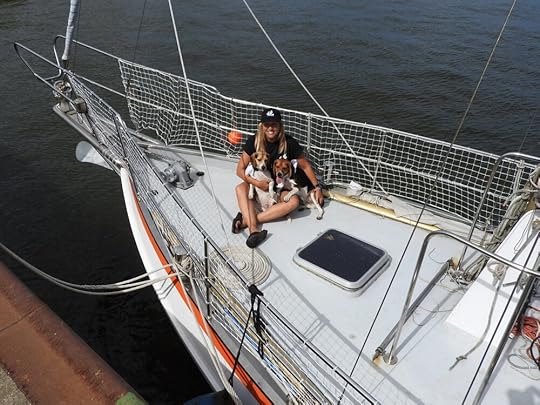
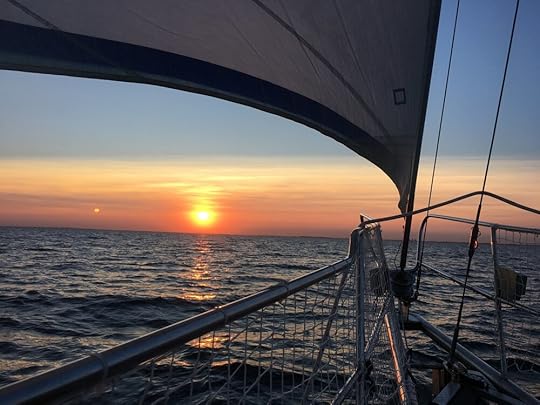
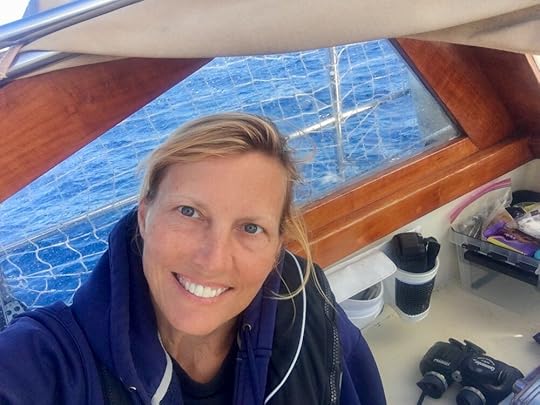
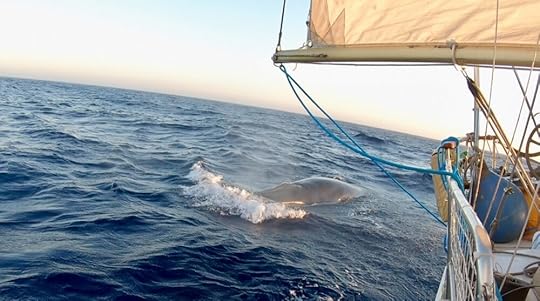
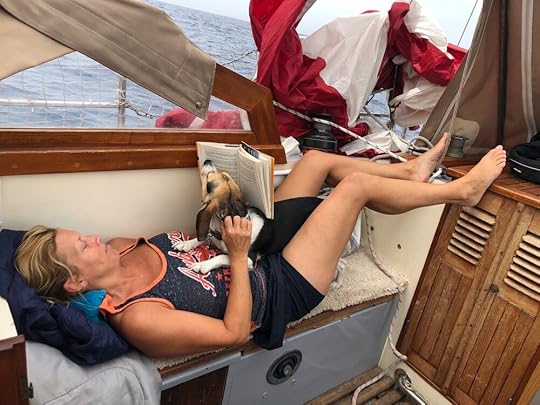
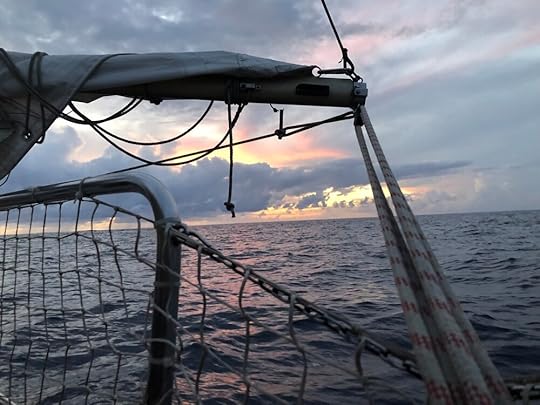

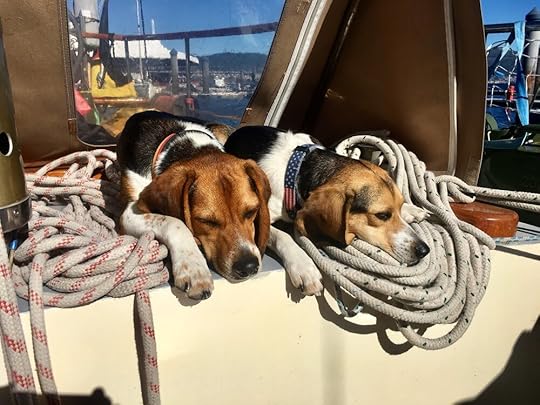
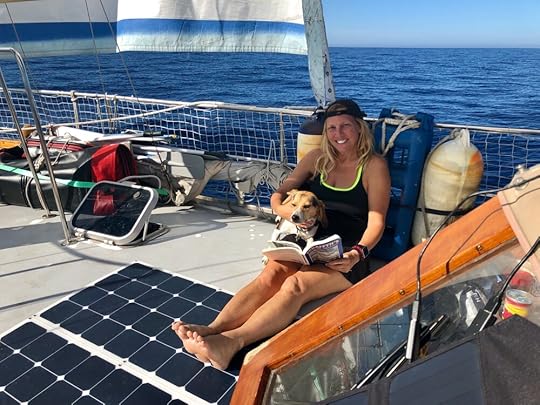
February 2, 2020By Michelle Segrest — Travel Adventures from #myofficetodayGulf Shores, Alabama, USA
Sometimes I lie in bed and can still feel the rocking and rolling motion of the sea. I can smell the salt air, and I can feel the cold wind on my face. I can hear the waves. I close my eyes and with vivid accuracy I can see the brilliant colors of each sunset. I don’t just remember the uncomfortable queasiness of seasickness—I can still feel it. I think of the Bay of Biscay, and I have a physical reaction. My tummy contracts, and I remember what I went through to get to the other side. At the same time, I beam with pride and remember the sheer relief and satisfaction I felt when land was in sight.
All the memories of a year at sea—both good and bad—left their imprint on my senses.
The transition back to land life has not been easy.
It’s been painful. It began with a serious surgery that required several months of tough recovery and thousands of dollars I didn’t have and that my cheap international insurance would not cover.
It’s been hard work. The year at sea left my business and finances in disrepair.
It’s been emotional. A six-year relationship that was never without drama and heartache but was happy and adventurous at times came to an end. Loyal to a fault, my efforts to repair all that was broken for so many years just weren’t enough.
It’s been difficult. Intense therapy has been required to help me recover from the loss of my health, my business, my identity, and my personal relationship.
It’s been lonely at times. I have often been unable to leave the house for days. I was so accustomed to seclusion I have struggled to learn how to be around people again. I didn’t have my beagles—Cap’n Jack & Scout—with me to provide an excuse to leave the house. At times, I’ve felt captive in my own home just as sometimes I felt captive aboard Seefalke.
The scars will be with me forever, along with the good memories. Although it’s only been five months, I believe now more than ever that time does heal all wounds.
With time, I’ve been able to rebuild my business.
With time (and with open-enrollment insurance options), I’ve been able to regain my health, although I still have several procedures in my near future to repair some of the neglected injuries and illnesses endured at sea.
With time, I’ve been able to re-enter society and civilization and have re-learned how to apply makeup, and fix my hair, and use appliances, and drive a car, and be social.
With time, I’ve regained the confidence and self-esteem that was slowly stripped from me for so many years.
With time, I’ve been able to re-establish relationships with family and friends. I know I’ll never again take for granted something as precious as the time you spend with the people you love.
Some things have been easy.
Cap’n Jack & Scout have only been home for a couple weeks, but on Day 1 they remembered their former routine. They remembered their neighborhood and their home. I thought I would have to retrain puppies again, but they remembered their potty training and have had no accidents. It’s as if they were only gone a few days.
My clients and business associates have embraced my return and trusted me with projects. I am confident with my professional abilities and talents, and I’m working on personal writing projects I have wanted to tackle for years. I’ve never felt so inspired to work and write.
I’m remembering what it’s like to be truly loved and cared for—thanks to loyal friends, loving family, and a special new relationship with an amazing man who has been by my side through some very difficult and often uncomfortable times.
It’s been a year since I set sail from Mindelo, São Vicente, Cape Verde, Africa for an Atlantic Ocean crossing, and it’s been 159 days since I left the broiling heat of Domburg, Suriname, South America to return to Sweet Home Alabama. And while each of those days has provided severe ups and downs, I will always treasure what was accomplished during the year at sea.
My year-long, worldwide sailing journey taught me many things about myself.
First, I learned that can I live without a lot. I can live without air conditioning or ice in stifling 100-plus degree heat. I can live without refrigeration or a proper shower or a comfy bed. I can survive in a very small space with no microwave or coffee maker or hair dryer. I can live in solitude and survive without internet or television or conversation. I can manufacture creative rigs and fix things when they break. I can walk sideways and cook on a moving boat while heeling on a 30-degree tilt. I can help to maintain systems while underway and swim to the bottom of a huge steel boat without diving gear or a mask and scrape sharp barnacles for two days in debilitating heat.
I learned that men don’t change and some men simply do not have the capacity to be true to only one woman. I finally learned that this is not ok. I learned that you can sacrifice everything you know and love to give someone their lifelong dream, but it still may not be enough to make them love you, respect you, honor you, or cherish you. That has perhaps been the hardest lesson of all. However, it’s also taught me that you can find your confidence and self-esteem even when it’s buried deep beneath a blanket of misconception and manipulation.
But most important, I learned that the mind is stronger than the body. I can challenge myself and fight physical, mental, and emotional obstacles to accomplish things I never thought possible. I can fight gut-wrenching seasickness and stay on watch. I can battle fear and sail at night in heavy traffic. I can withstand severe heat stroke, severe exhaustion, and severe loneliness and isolation and come out clean on the other side.
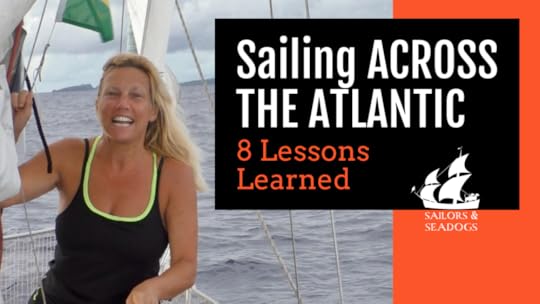
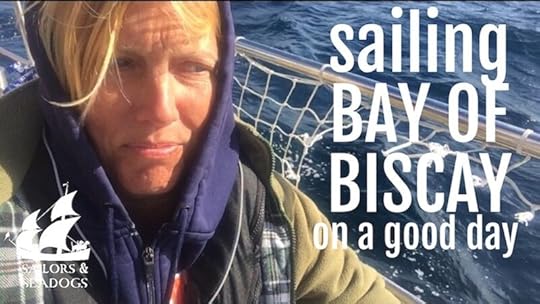
I battled the Baltic Sea and made a non-stop passage across the North Sea. I sailed through the English Channel. I battled severe seasickness, exhaustion, and dehydration for four straight days while sailing through the infamous Bay of Biscay. I sailed along the coast of Spain and Portugal and had an eye-to-eye encounter with a friendly whale. I checked Casablanca off my bucket list and saw Africa for the first time. I sailed to the Canary Islands and explored Cape Verde and other remote places I’d never even heard of before this voyage. I traveled to South America for the first time and experienced many beautiful and unique cultures around the world. I made friends with other sailors whose stories continue to inspire me. I sailed across the Equator twice.
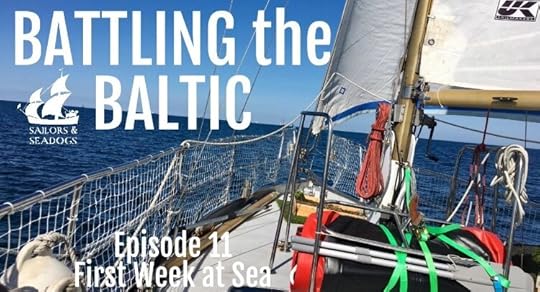
I crossed the Atlantic Ocean in a sailboat!
I didn’t do any of these things alone, but I did it.
Even if photos and videos are removed from existence, it doesn’t change the fact that this voyage happened, or that I was an integral part of it. I never missed a sailing shift or night watch. I organized and planned. I cleaned and cooked and cared for two Seadogs and carried a significant chunk of the financial burden. I stayed alone on the boat with the dogs 12 times while my captain enjoyed time with friends and family and civilization and was able to work. One of those times I did it with a broken foot, and another time while bleeding and in torturous pain.
I overcame these and other challenges for 7,194 nautical miles over the course of 372 days, and just like the beautiful memories of gorgeous beaches and fascinating people, I’ll never let anyone take any of that away from me. I will continue to share more details of the battles, the experiences, and the amazing destinations.
While this worldwide sailing journey is over for me, my experiences, the scars, and the memories will live forever in my heart, my soul, and on the worldwide web.
I am not and never was a nameless first mate or simply a passenger on board. I am a sailor. I have the significant contributions, the experiences, the nautical miles, and the scars to prove it. I will not stop sailing or traveling or seeking adventure.
I am a writer. I will not stop writing about my experiences, and I will continue to share them.
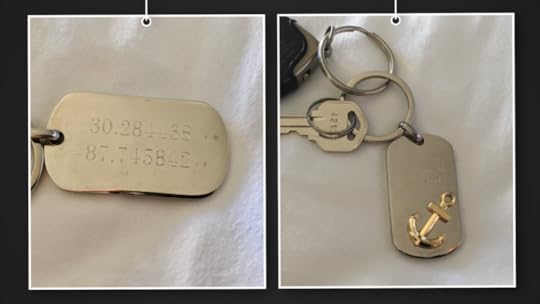
My friends and neighbors, Mike and Lynn Jordan, gave me this keychain for my 50th birthday a few years ago. It includes part of my favorite quote from William Ernest Henley, “I am the master of my fate. I am the captain of my soul.” And it includes the coordinates to my home in Gulf Shores. They told me this way I would always find my way home.
This year-long sailing journey changed me. It changed me for the better. But the months back on land have also changed me for the better. I am now a much stronger person—physically, mentally, and emotionally. For the first time in a very long time, I am happy. I am happy on my own terms, in my own environment, and in my own skin.
Life is good.
Finally, I know what it feels like to truly be the master of my fate and the captain of my soul.
Click Here to Read About My Amazing Year at Sea
If you like this article, PIN IT!
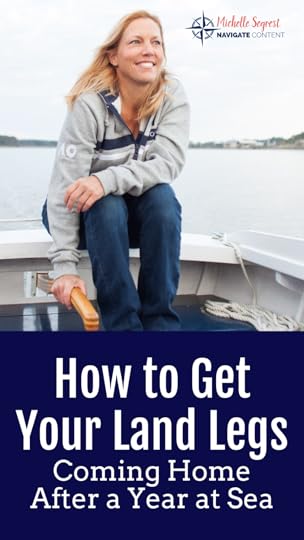
How to Get Your Land Legs











February 2, 2020Gulf Shores, Alabama, USA
Sometimes I lie in bed and can still feel the rocking and rolling motion of the sea. I can smell the salt air, and I can feel the cold wind on my face. I can hear the waves. I close my eyes and with vivid accuracy I can see the brilliant colors of each sunset. I don’t just remember the uncomfortable queasiness of seasickness—I can still feel it. I think of the Bay of Biscay, and I have a physical reaction. My tummy contracts, and I remember what I went through to get to the other side. At the same time, I beam with pride and remember the sheer relief and satisfaction I felt when land was in sight.
All the memories of a year at sea—both good and bad—left their imprint on my senses.
The transition back to land life has not been easy.
It’s been painful. It began with a serious surgery that required several months of tough recovery and thousands of dollars I didn’t have and that my cheap international insurance would not cover.
It’s been hard work. The year at sea left my business and finances in disrepair.
It’s been emotional. A six-year relationship that was never without drama and heartache but was happy and adventurous at times came to an end. Loyal to a fault, my efforts to repair all that was broken for so many years just weren’t enough.
It’s been difficult. Intense therapy has been required to help me recover from the loss of my health, my business, my identity, and my personal relationship.
It’s been lonely at times. I have often been unable to leave the house for days. I was so accustomed to seclusion I have struggled to learn how to be around people again. I didn’t have my beagles—Cap’n Jack & Scout—with me to provide an excuse to leave the house. At times, I’ve felt captive in my own home just as sometimes I felt captive aboard Seefalke.
The scars will be with me forever, along with the good memories. Although it’s only been five months, I believe now more than ever that time does heal all wounds.
With time, I’ve been able to rebuild my business.
With time (and with open-enrollment insurance options), I’ve been able to regain my health, although I still have several procedures in my near future to repair some of the neglected injuries and illnesses endured at sea.
With time, I’ve been able to re-enter society and civilization and have re-learned how to apply makeup, and fix my hair, and use appliances, and drive a car, and be social.
With time, I’ve regained my confidence and self-esteem.
With time, I’ve been able to re-establish relationships with family and friends. I know I’ll never again take for granted something as precious as the time you spend with the people you love.
Some things have been easy.
Cap’n Jack & Scout have only been home for a couple weeks, but on Day 1 they remembered their former routine. They remembered their neighborhood and their home. I thought I would have to retrain puppies again, but they remembered their potty training and have had no accidents. It’s as if they were only gone a few days.
My clients and business associates have embraced my return and trusted me with projects. I am confident with my professional abilities and talents, and I’m working on personal writing projects I have wanted to tackle for years. I’ve never felt so inspired to work and write.
I’m remembering what it’s like to be truly loved and cared for—thanks to loyal friends, loving family, and a special new relationship with an amazing man who has been by my side through some very difficult and often uncomfortable times.
It’s been a year since I set sail from Mindelo, São Vicente, Cape Verde, Africa for an Atlantic Ocean crossing, and it’s been 159 days since I left the broiling heat of Domburg, Suriname, South America to return to Sweet Home Alabama. And while each of those days has provided severe ups and downs, I will always treasure what was accomplished during the year at sea.
My year-long, worldwide sailing journey taught me many things about myself.
First, I learned that can I live without a lot. I can live without air conditioning or ice in stifling 100-plus degree heat. I can live without refrigeration or a proper shower or a comfy bed. I can survive in a very small space with no microwave or coffee maker or hair dryer. I can live in solitude and survive without internet or television or conversation. I can manufacture creative rigs and fix things when they break. I can walk sideways and cook on a moving boat while heeling on a 30-degree tilt. I can help to maintain systems while underway and swim to the bottom of a huge steel boat without diving gear or a mask and scrape sharp barnacles for two days in debilitating heat.
But most important, I learned that the mind is stronger than the body. I can challenge myself and fight physical, mental, and emotional obstacles to accomplish things I never thought possible. I can fight gut-wrenching seasickness and stay on watch. I can battle fear and sail at night in heavy traffic. I can withstand severe heat stroke, severe exhaustion, and severe loneliness and isolation and come out clean on the other side.
I battled the Baltic Sea and made a non-stop passage across the North Sea. I sailed through the English Channel. I battled severe seasickness, exhaustion, and dehydration for four straight days while sailing through the infamous Bay of Biscay. I sailed along the coast of Spain and Portugal and had an eye-to-eye encounter with a friendly whale. I checked Casablanca off my bucket list and saw Africa for the first time. I sailed to the Canary Islands and explored Cape Verde and other remote places I’d never even heard of before this voyage. I traveled to South America for the first time and experienced many beautiful and unique cultures around the world. I made friends with other sailors whose stories continue to inspire me. I sailed across the Equator twice.
I crossed the Atlantic Ocean in a sailboat!
I didn’t do any of these things alone, but I did it.
Even if photos and videos are removed from existence, it doesn’t change the fact that this voyage happened, or that I was an integral part of it. I never missed a sailing shift or night watch. I organized and planned. I cleaned and cooked and cared for two Seadogs and carried a significant chunk of the financial burden. I stayed alone on the boat with the dogs 12 times while my captain enjoyed time with friends and family and civilization and was able to work. One of those times I did it with a broken foot, and another time while bleeding and in torturous pain.
I overcame these and other challenges for 7,194 nautical miles over the course of 372 days, and just like the beautiful memories of gorgeous beaches and fascinating people, I’ll never let anyone take any of that away from me. I will continue to share more details of the battles, the experiences, and the amazing destinations.
While this worldwide sailing journey is over for me, my experiences, the scars, and the memories will live forever in my heart, my soul, and on the worldwide web.
I am not and never was a nameless first mate or simply a passenger on board. I am a sailor. I have the significant contributions, the experiences, the nautical miles, and the scars to prove it. I will not stop sailing or traveling or seeking adventure.
I am a writer. I will not stop writing about my experiences, and I will continue to share them.

My friends and neighbors, Mike and Lynn Jordan, gave me this keychain for my 50th birthday a few years ago. It includes part of my favorite quote from William Ernest Henley, “I am the master of my fate. I am the captain of my soul.” And it includes the coordinates to my home in Gulf Shores. They told me this way I would always find my way home.
This year-long sailing journey changed me. It changed me for the better. But the months back on land have also changed me for the better. I am now a much stronger person—physically, mentally, and emotionally. For the first time in a very long time, I am happy. I am happy on my own terms, in my own environment, and in my own skin.
Life is good.
Finally, I know what it feels like to truly be the master of my fate and the captain of my soul.
January 30, 2020
Top 10 Dog-Friendly Things to Do in Gulf Shores, Alabama
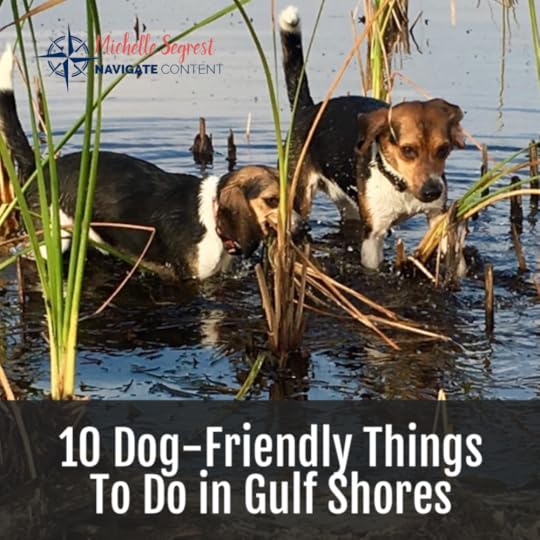










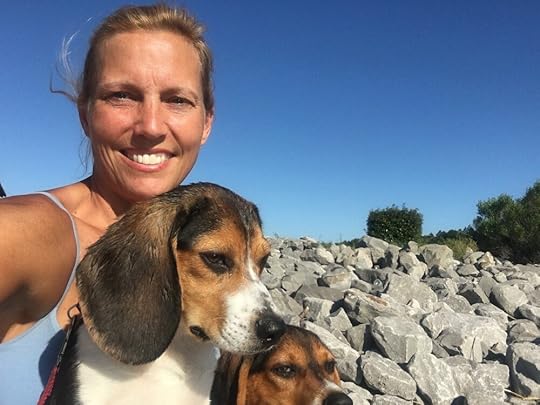




The weather is spectacular year-round. The beaches are sugary white, and the sunsets are breathtaking. Gulf Shores offers plenty of outlet shopping, restaurants, events, concerts, art shows, bars, and attractions. But the greatest thing about living in Gulf Shores is that I can take my beagles, Cap’n Jack & Scout, almost anywhere with me.
Most restaurants with outdoor seating are happy to allow you to bring your furry family members along if you keep them on a leash. And the opportunities to unleash the hounds at local dog parks are abundant.
These are my Top 10 things to do with Cap’n Jack & Scout in my hometown of dog-friendly Gulf Shores.1. Kayak Adventures. Load your dog on your kayak and take a paddle around Plash Island. I love chatting with the local fishermen and enjoy seeing all the shrimp boats. We always see dolphins, pelicans, and other wildlife. It takes me about two hours to paddle around the entire island if I don’t stop to take pictures or to rest, but there are several places to beach the kayak and let the dogs run and play. It’s a perfect opportunity for an afternoon of free, fun activity with your dog.
2. Spend an afternoon at Pirate’s Cove. Pirate’s Cove is a dog’s paradise with open beach to play on and tons of sun-loving boaters who are sure to share treats. It’s about a 40-minute cruise from Plash Island in a power boat, but much longer if traveling by sailboat. It’s totally worth the trip and a can’t-miss activity for dogs and their humans.
3. Go to Dog-Friendly Restaurants. I love to load the dogs in the Protagonist, my wooden day sailer, and sail down the ICWW to Tacky Jack’s. You can moor your boat right outside, and dogs are welcome if you take an outside table. Some other local restaurants that are dog friendly include Flying Harpoon, Hog Wild BBQ, Shrimp Basket, Bleus Burger, Woodside Restaurant, the Beach House Kitchen & Cocktails, Pleasure Island Tiki Bar, and one of my other favorites, The Gulf.
4. Get an ice cream treat. Treat your dog to a free ice cream sundae made just for him at Brusters Real Ice Cream. The parlor offers this special treat with dog biscuits crumbled on top so your dog can enjoy an ice cream date along with the rest of the family.
5. Unleash the Hounds. The Dog Park at Gulf State Park on Shelby Lake is by far Cap’n Jack & Scout’s favorite local dog park. There are separate areas for big and small dogs with plenty of room to run and play with other dogs. From 8 a.m. until sunset dogs can run and play unleashed and splash in the fresh water of Shelby Lake. Often alligators have been spotted there so watch out for these predators. There are several other great dog parks in the area—including Gulf Shores Dog Park, Orange Beach Waterfront Park, and Unleashed Dog Park-Orange Beach.
6. A day at the beach. Fort Morgan Beach is the only dog-friendly beach in the area, and dogs must be kept on a leash, although the Fort Morgan Historic Site is off limits for dogs.
7. Go camping. Gulf State Park Campground is a great place to hang out with your furry family members. Dogs are allowed but they must be kept on a leash no longer than 6 feet when outside your vehicle, and they must be properly cleaned up after.
8. Go hiking. Take a hike in Gulf State Park, which allows pets on leashes on the trails, as well as in the campground and picnic areas. No pets are allowed in the nature center, in the swimming pool, or on the beaches, unfortunately.
9. More places to hike. Connecting with Gulf State Park is the Hugh S. Branyon Backcountry Trail, a network of seven trails that span more than 15 miles and six different ecosystems. While pets must remain on a leash at all times on these trails, they’ll have plenty of space to run, play, and explore.
10. Give the dogs a mini-break. If you are in Gulf Shores and want to do something that’s not dog friendly, check out SeaPaws Dog Resort for the day. With two locations (Plash Island and Foley) this place offers a full day of unleashed fun for your dog. It’s the best doggie daycare and boarding place on the Gulf Coast with acres of fenced room for your dog to run and play with other dogs. Cap’n Jack & Scout get so much exercise and social interaction. Paula takes such good care of them you will feel comfortable leaving them for the day if you need to enjoy other activities on the coast.

Read more about Plash Island – Paradise on Alabama’s Gulf Coast
Plash Island - Paradise on Alabama's Gulf Coast





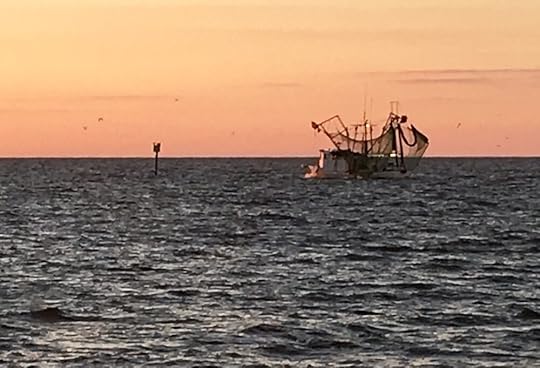


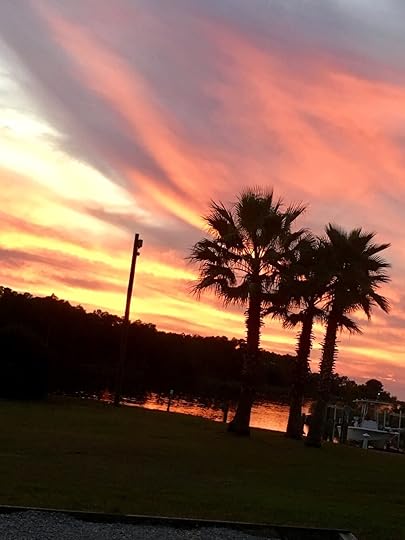

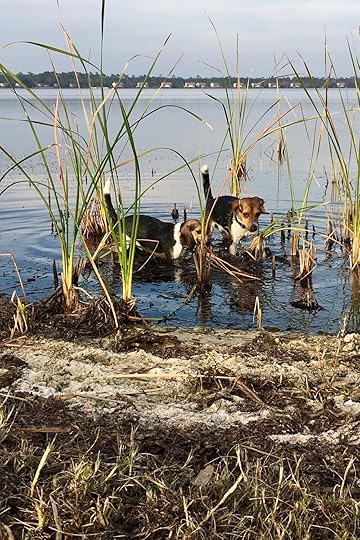
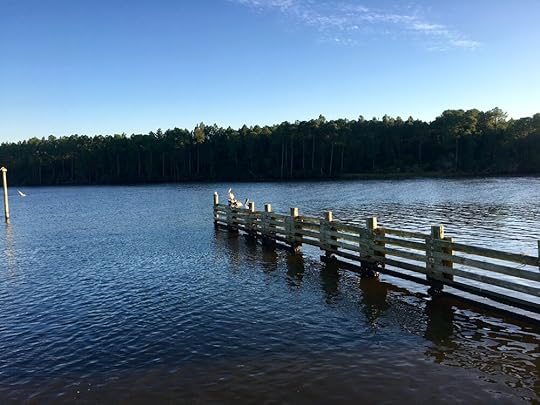




Fight the heavy tourist traffic traveling south on Highway 59 and you’ll find hundreds of shops, restaurants, attractions, bars, and discount shopping outlets.
But if it’s serenity you seek, hang a right just before the W.C. Holmes Bridge and begin the long, empty, somewhat boring trek down Oyster Bay Road. The two-or-so-mile drive down County Road 4 seems endless as any evidence of tourism completely disappears.
Cross over the 50-yard bridge that connects Gulf Shores to Plash Island—a small, quaint, island community—and you will begin to see life again. You can catch a glimpse of dolphins surfacing in the bay and see the old and new ships being serviced and refurbished at Nelson’s Boatyard. Local fisherman take cover from the brutal sun under the low bridge that provides the only road access to the island as they patiently drop their lines in hopes of landing the speckled trout, redfish, sheetshead, and flounder that are abundant in the mixture of fresh and saltwater below.
Enter Paradise.
There is no sign of tourism of any kind on the island. No restaurants, no gas stations, no convenience stores, or shops—you’ll only find local residents and the small Oyster Bay Baptist Church, which is a renovated building that was originally constructed in 1923.
The obvious and welcome lack of hustle and bustle creates a quiet, communal atmosphere. Plash Island offers the best of both worlds—a serene island lifestyle with no tourist traffic but easy access to all the shops, restaurants, events, and attractions that are so prominent in the heart of a city that thrives on tourism.
I lived, worked, and reared my children for 23 years in the industrial city of Birmingham, the largest city in Alabama. In 2016, when my children left the nest for college at Auburn University, the sea and salt air were calling my name, and I made the easiest decision of my life. I made Plash Island my home and have never looked back. I travel the world for work and often report about incredible and unique locations from #myofficetoday. Plash Island is #myofficeeveryday, and there is no place in the world like home!





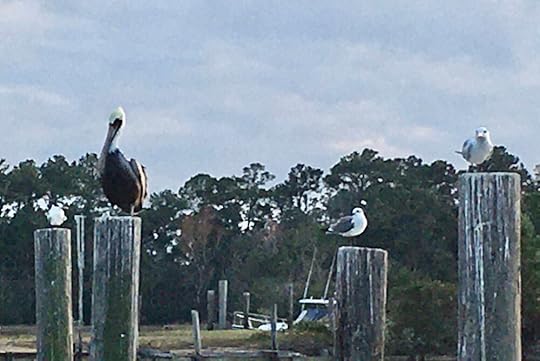


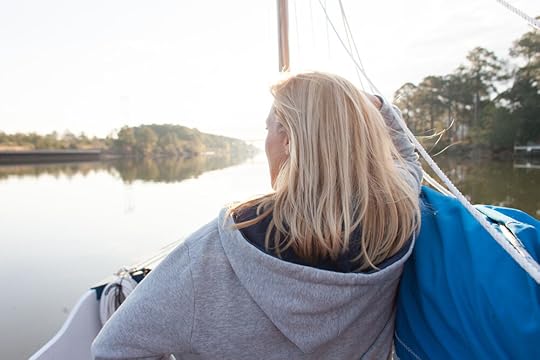

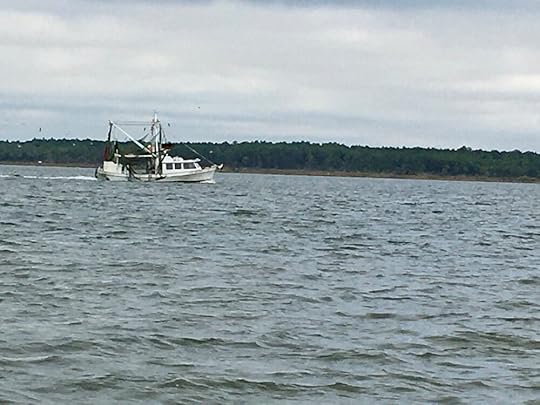




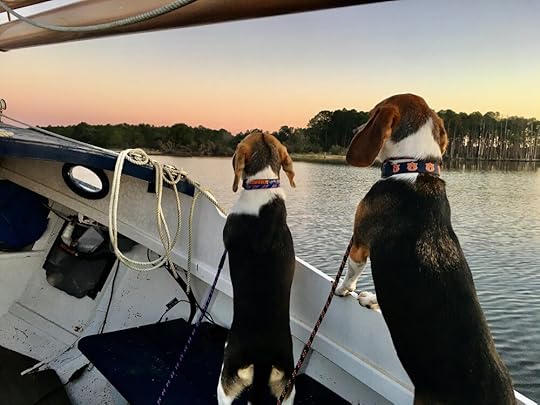


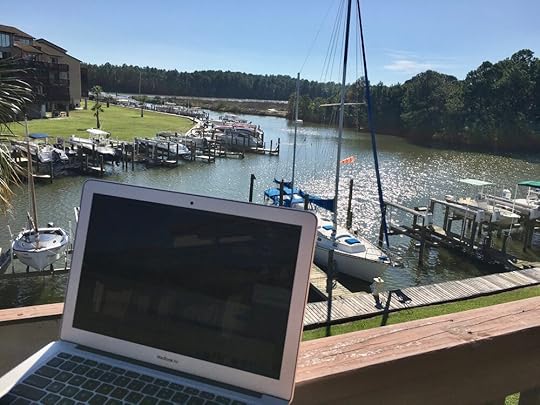
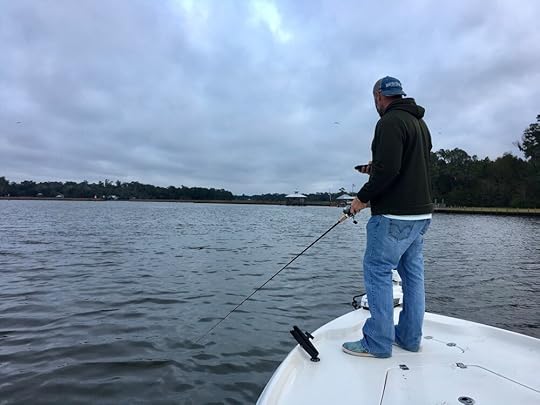

Plash Island is located about five miles west of downtown Gulf Shores. Bon Secour Bay (which means “safe harbor”) is my back yard and my front yard is a gorgeous marina on the Intracoastal Waterway within a small condo community of sailors, fishermen, and boat lovers.
Surrounded completely by water, I can sit on my back deck and see the barges and shrimp boats cruise along the ICWW. I can sit on my front porch and witness spectacular sunsets highlighted by silhouettes of classic shrimp boats on Bon Secour Bay.
On daily walks with my beagles, Cap’n Jack & Scout, we see herons patrolling the marina and the banks of the island. Pelicans dive head first, crashing with great force into the water of Bon Secour Bay as they fish for food. Sometimes eagles soar above our heads. Even though we see them almost every day, we never get tired of watching the local dolphins splash, fish, and play. Sometimes, a manatee finds its way inside our marina.
Wildlife is abundant on Plash Island. In addition to many varieties of birds, opossum, raccoons, and armadillos, at night we can hear the coyotes howling at the moon and can often hear the snort of wild boar. And occasionally, an alligator slithers through the marina waters or along the beautiful rocks that border the island’s perimeter.
The People of Plash IslandThe friendly and talented people of Plash Island are as beautiful as its scenery and sunsets.
You can charter a fishing boat from the Frazier family, who own and operate Fins & Family Fishing, which offers private, family-friendly inshore and offshore fishing charters in Gulf Shores and Orange Beach. Set to open in early 2020, they also own and operate Captain Frazier’s Bait & Snack Boat, which features live bait such as shrimp, croakers, and bull minnows as well as cold sodas, refreshing snow cones, and light snacks.
In 2009, friends and Plash Island residents Dave and Tricia LaGasse built the amazing Gulf State Park Pier. At 1,540 feet, the pier is the second longest pier on the Gulf of Mexico and has 2,448 feet of fishing space and a fish cleaning station.
Paula Gonzalez operates SeaPaws Dog Resort, located right next door to us on Plash Island. She offers a full day of unleashed fun for your dog. It’s the best doggie daycare and boarding place on the Gulf Coast with acres of fenced room for your dog to run and play with other dogs. Cap’n Jack & Scout get so much exercise and social interaction and love to spend time there when I have to travel without them.
From her front porch, Lynn Jordan captures exquisite images of the shrimp boats trawling through Bon Secour Bay.
The Shrimping Tradition of Gulf ShoresSeeing the classic shrimp boats is part of the character of Plash Island. Commercial fishing in South Baldwin County is a multi-million-dollar industry with market demands for shrimp, oysters, and fish exceeding the supply.
On September 25, 1971, The Gulf Shores Tourist Association created the first shrimp festival held on the municipal beach adjacent to the Hangout (at the end of State Highway 59). Homespun, with a friendly, relaxed feeling, numerous church and civic organizations featured shrimp dishes at a nominal cost as fundraising projects and to promote the use of shrimp, which provided the area at that time with $5 million annually.
From a one-day festival in 1971 to a four-day event that is still held annually in early October, the Gulf Shores Shrimp Festival on Pleasure Island has grown in popularity and now attracts more than 300,000 people each year.
The Fishing Tradition of Plash Island
How to Sail with Dogs: 100 Tips for a Pet-Friendly Voyage
By Michelle Segrest
With its rock piled perimeter and nearby islands, Plash Island and the surrounding area offers a built-in fishing structure that is a fertile hunting ground for local fishermen. There is a mixture of fresh water coming in from Magnolia Springs and Bon Secour River and seawater coming in from Mobile Bay. Fishermen and boaters can venture into Bon Secour Bay to the opening of Mobile Bay—where Fort Morgan meets Dauphin Island—and see the distinct line where the fresh water meets the saltwater of the Gulf of Mexico.
The History of Plash IslandFrom Plash Island, it’s only about a 10- to 15-minute drive to the Gulf Shores beach, or a 40-minute bicycle ride, which is my preferred way to get there! Beautiful Gulf State Park is also easily accessible with bike trails along Shelby Lake, featuring a cool dog park, and the magnificent Gulf State Park Pier.
Formerly the northernmost tip of the Fort Morgan Peninsula, the area became an island in the early 1940s when the ICWW was built. Plash Island was named for the family who settled it to harvest seafood and was the home of Plash Island Seafood for 34 years. Plash's store was at the mouth of the south fork of Bon Secour River. The Intracoastal Canal was cut through the peninsula behind Plash’s store, cutting the Ridge Road off from Bon Secour.
Originally, it was simply called “The Island.” On an old map it was called “Hog Island.” Around 1965, the name Plash Island began to catch on.
About 600 acres on or near Plash Island were annexed into Gulf Shores in October 2004.
Cap’n Jack & Scout love to hop in the Protagonist, our wooden, 15-foot day sailer, and cruise with me around the island to local Gulf Shores restaurants. Many of them allow us to moor the boat right outside. With outdoor seating, our beagles are always welcome. Sometimes we take the boat out at sunset and just sit inside the gorgeous colors that reflect off the calm bay water. In about two-hours, the beagles and I can paddle around the entire island on a kayak and see the island’s beauty from the water.
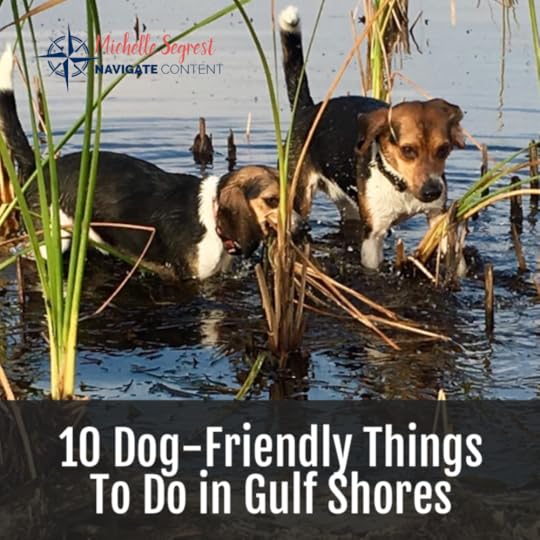
Along with the quiet atmosphere and relaxed island lifestyle, Plash Island and Gulf Shores are especially dog-friendly, which is the ultimate bonus. Although I’ve sailed and traveled to unbelievably beautiful destinations on six continents, there is nowhere in the world I’d rather call home than Plash Island.
READ about my Top 10 Dog-Friendly Things To Do in Gulf Shores


